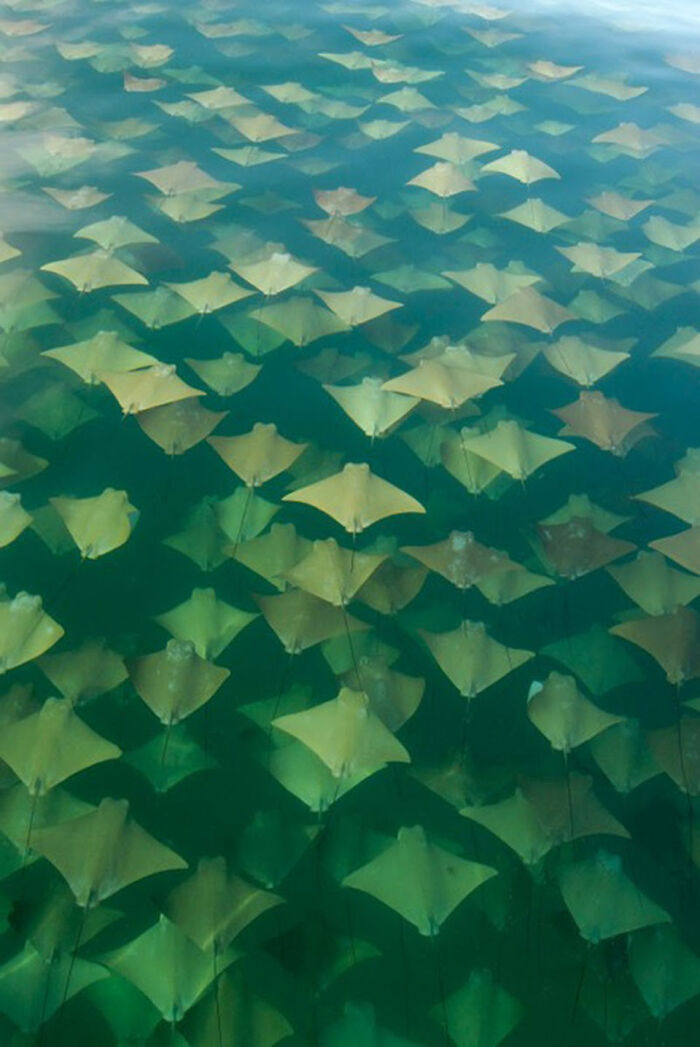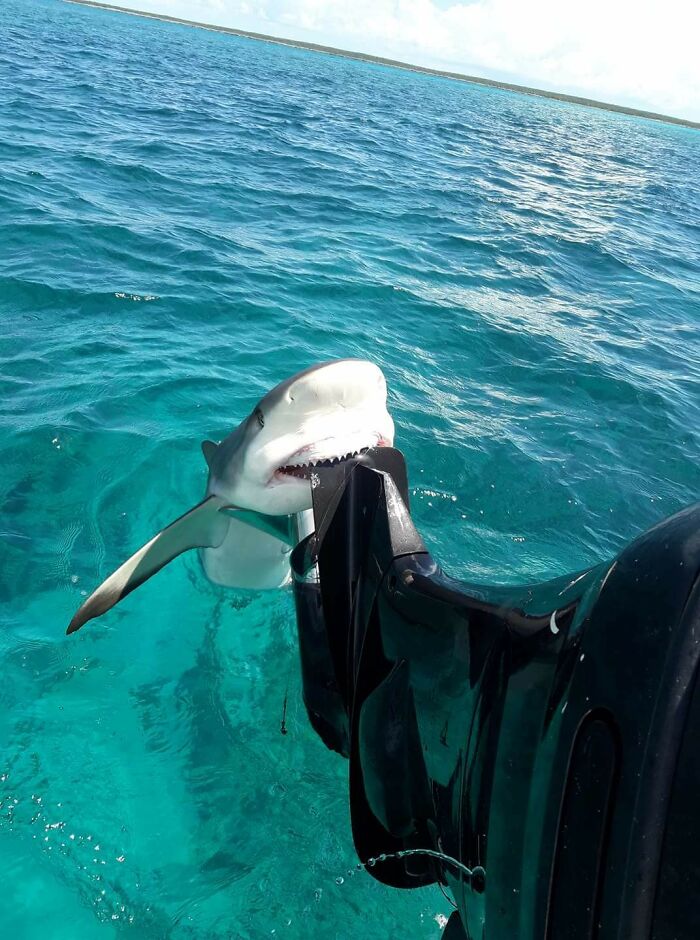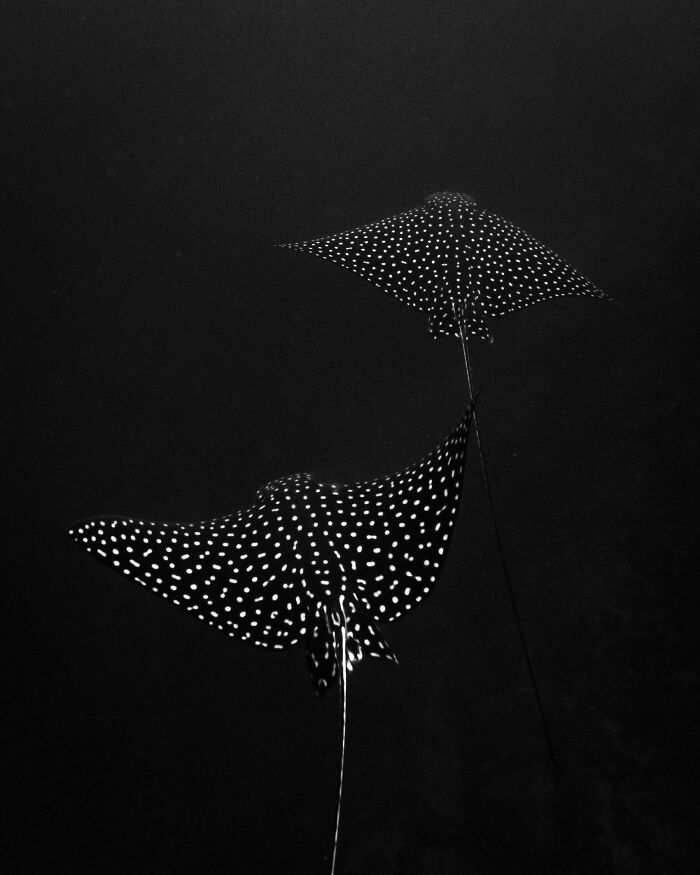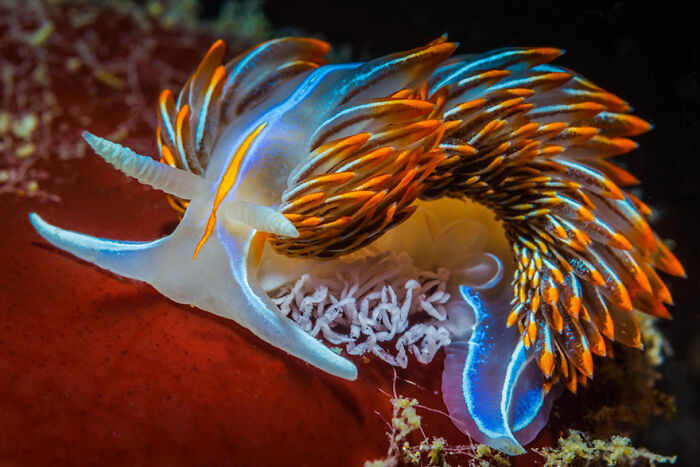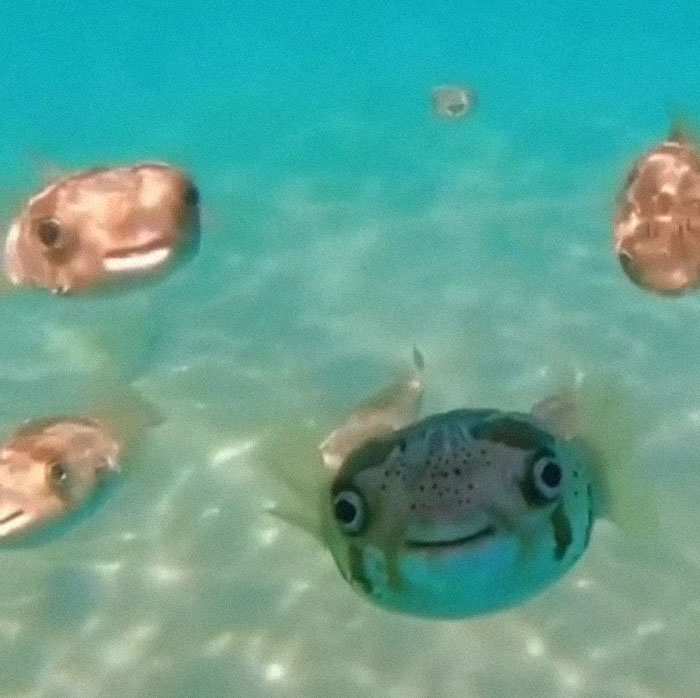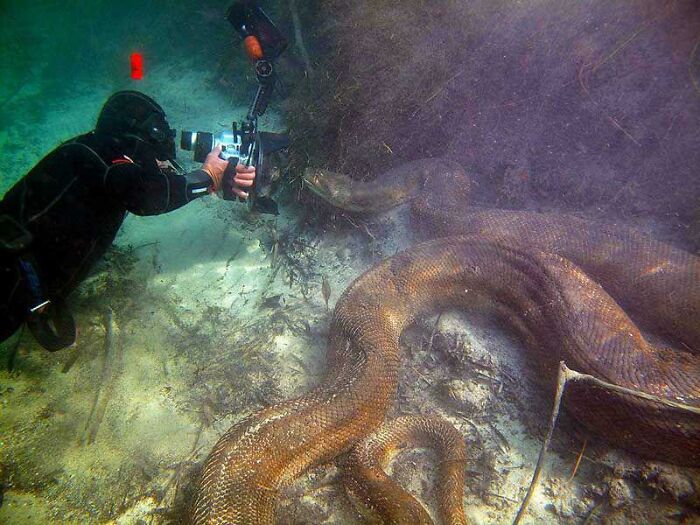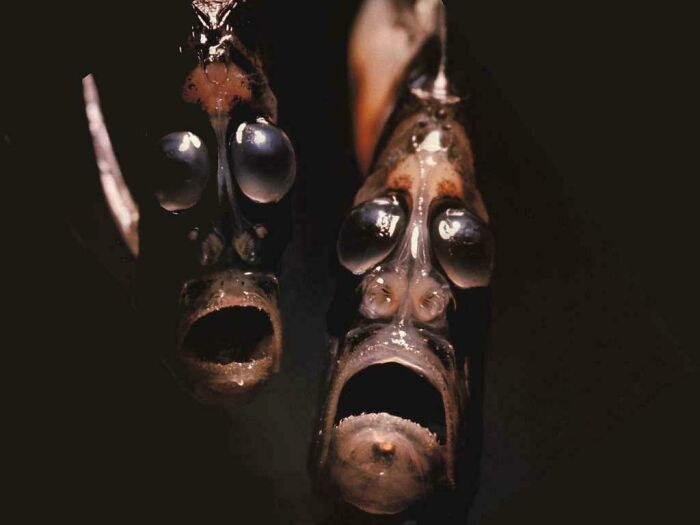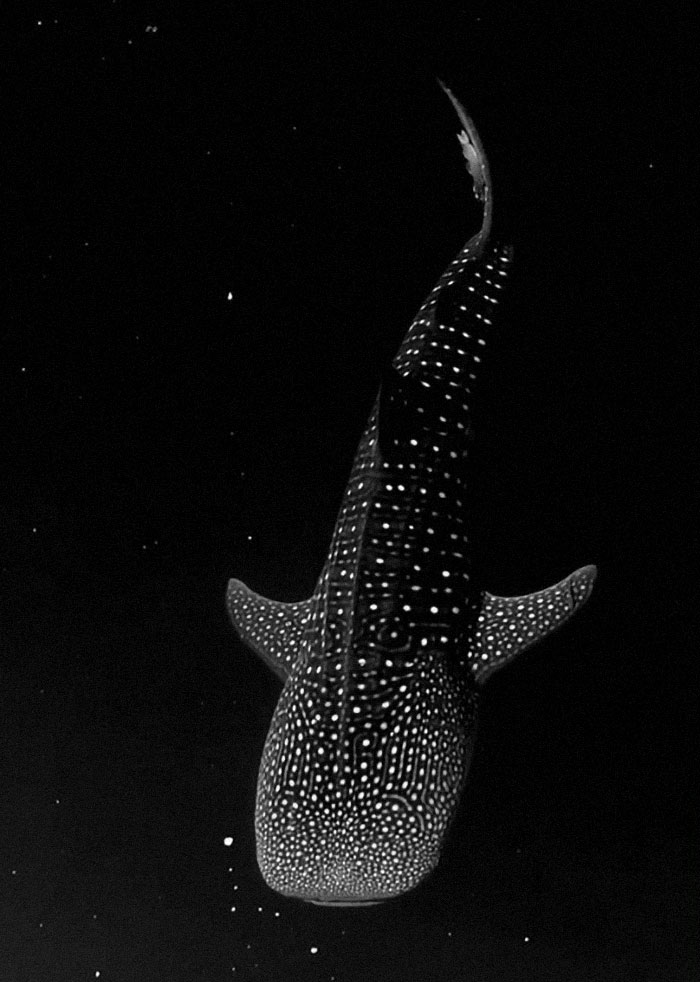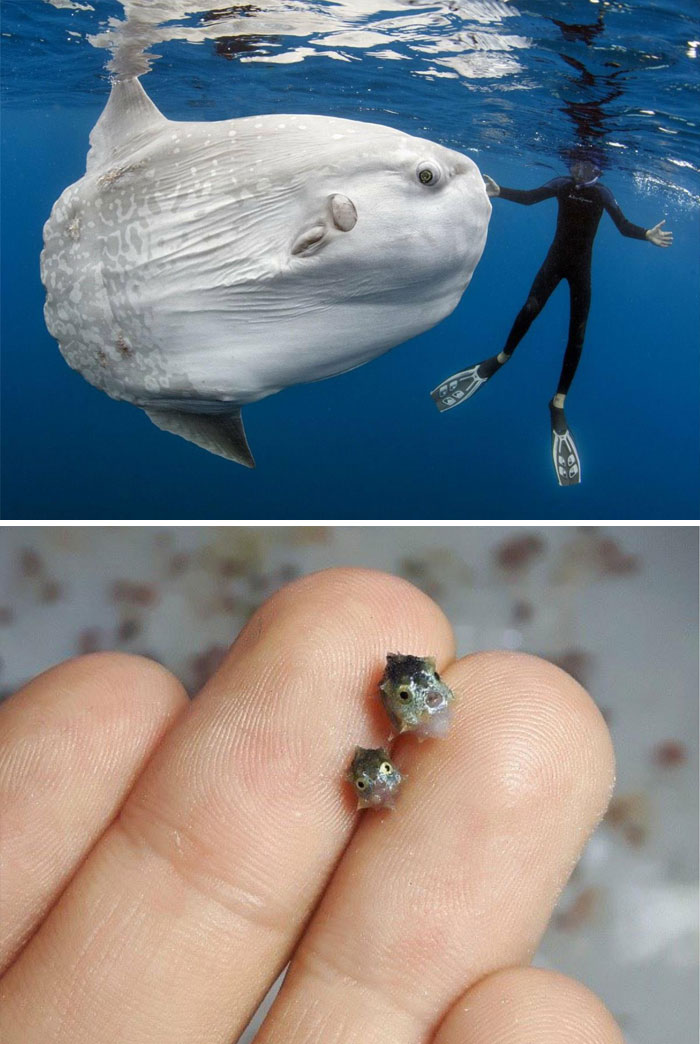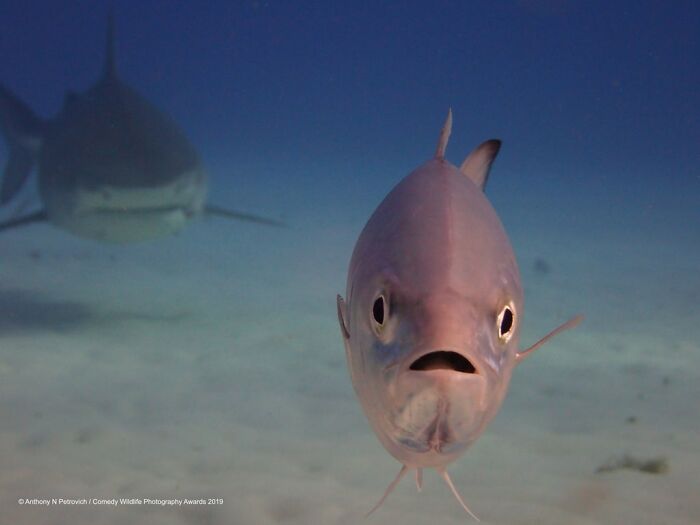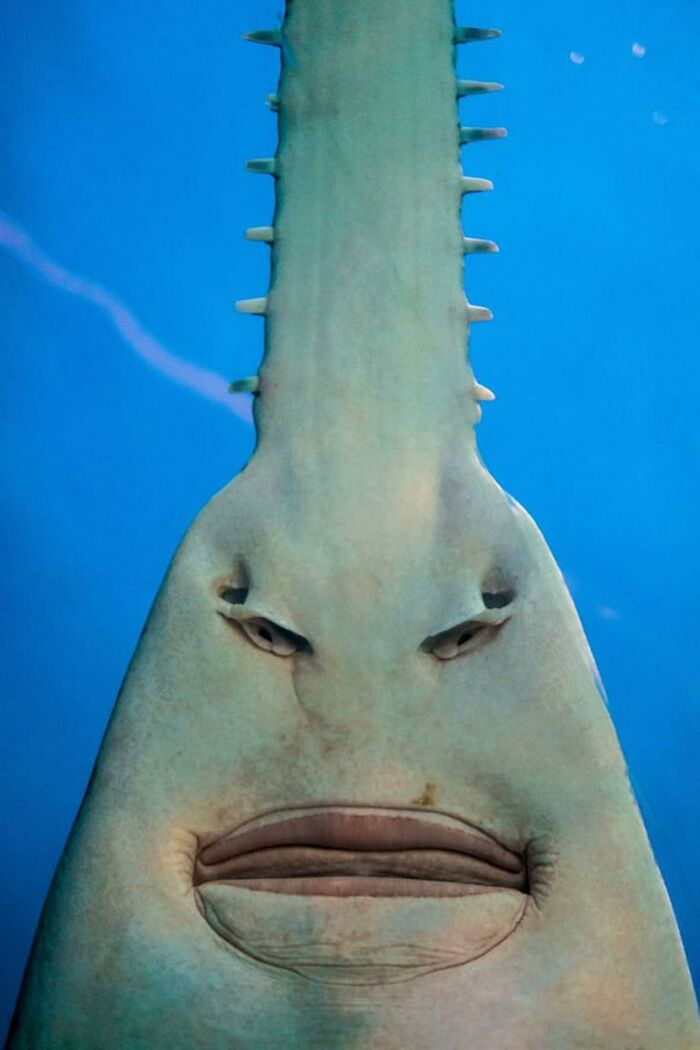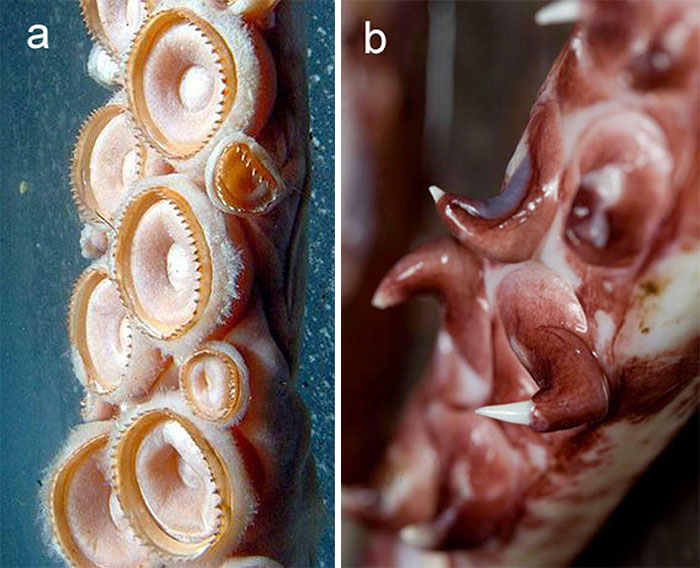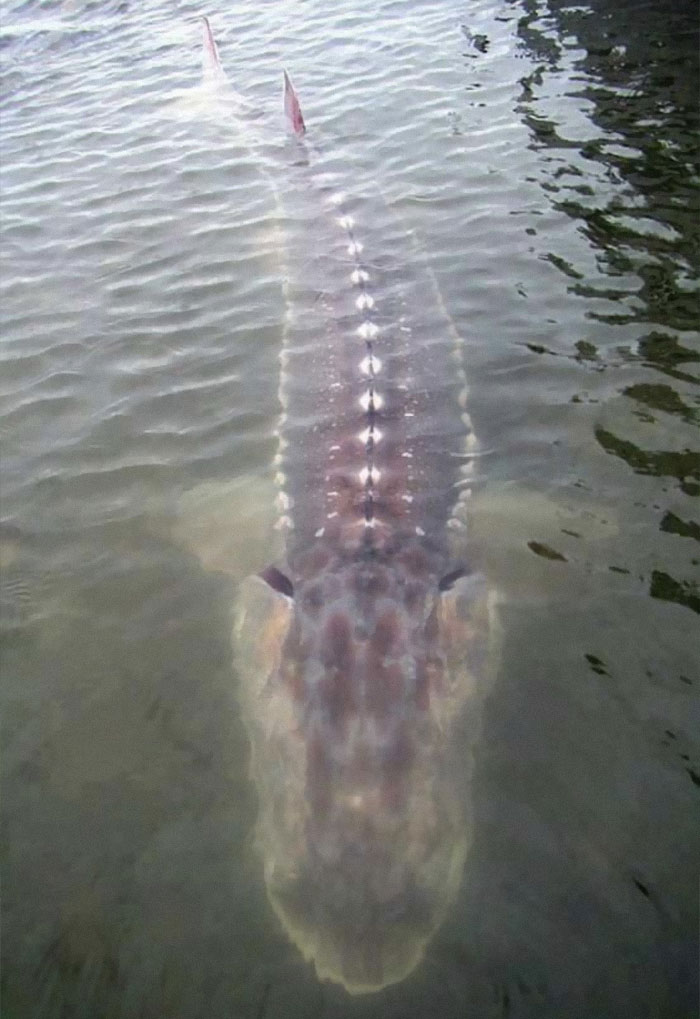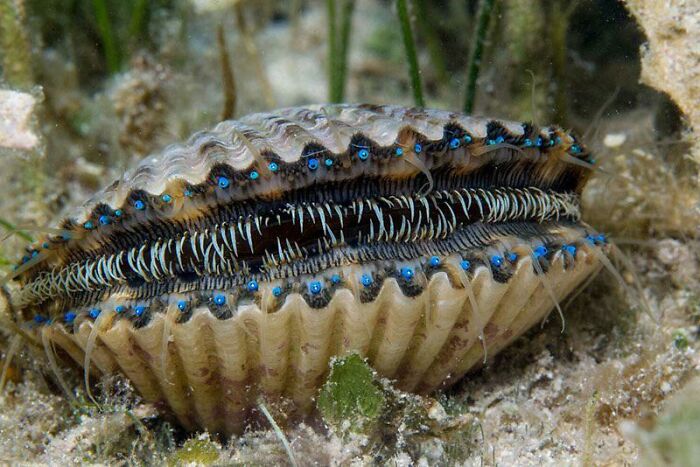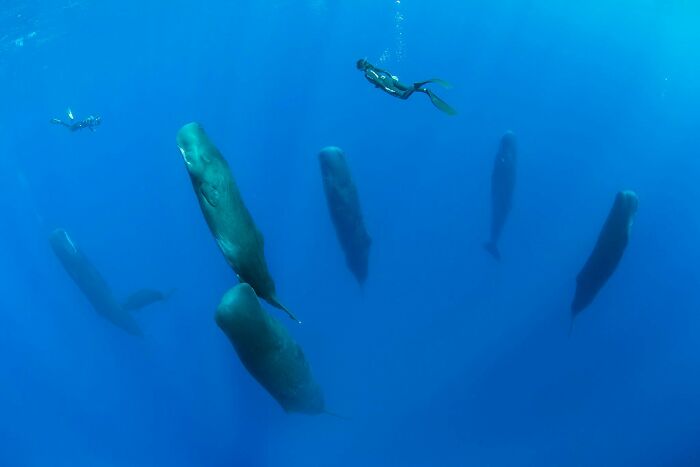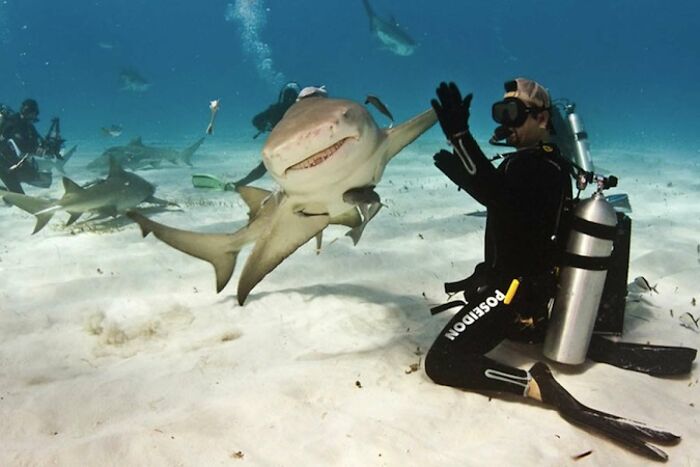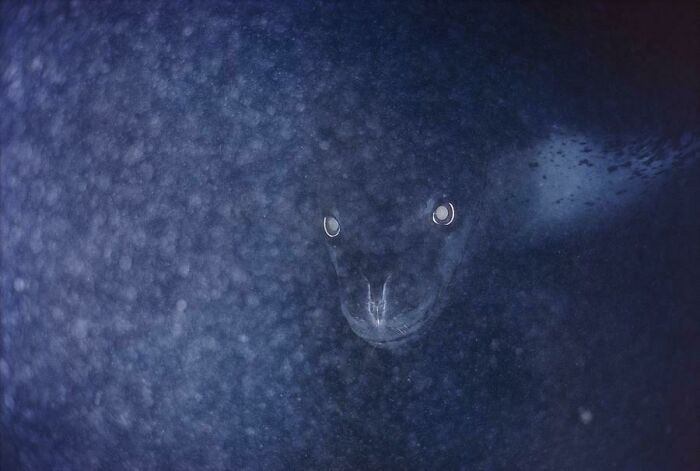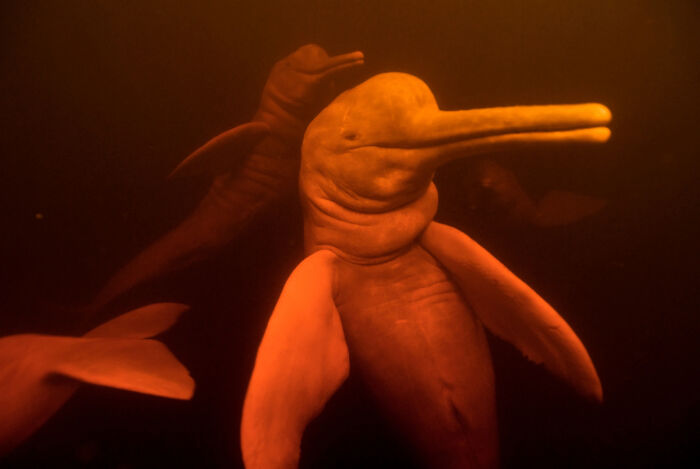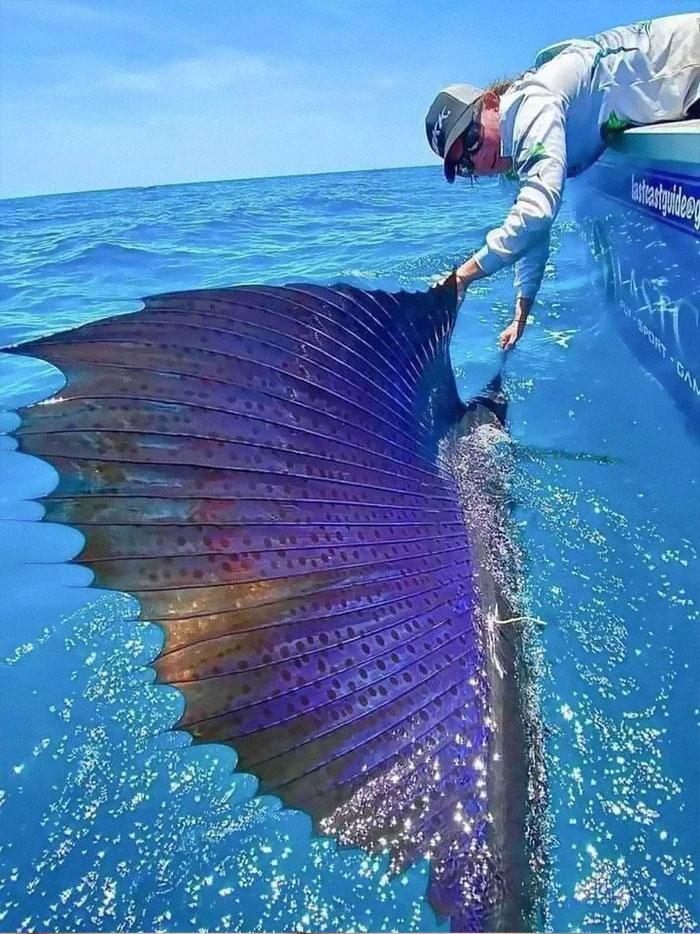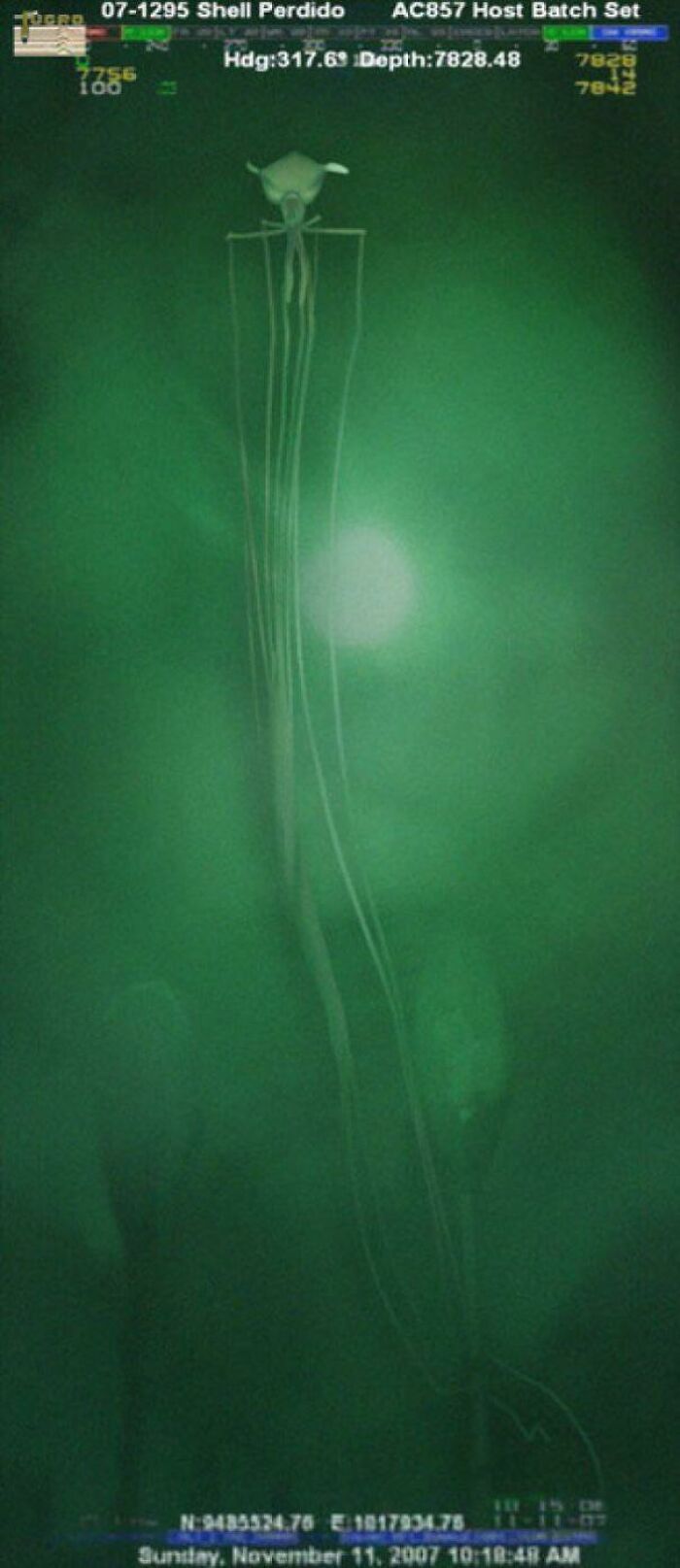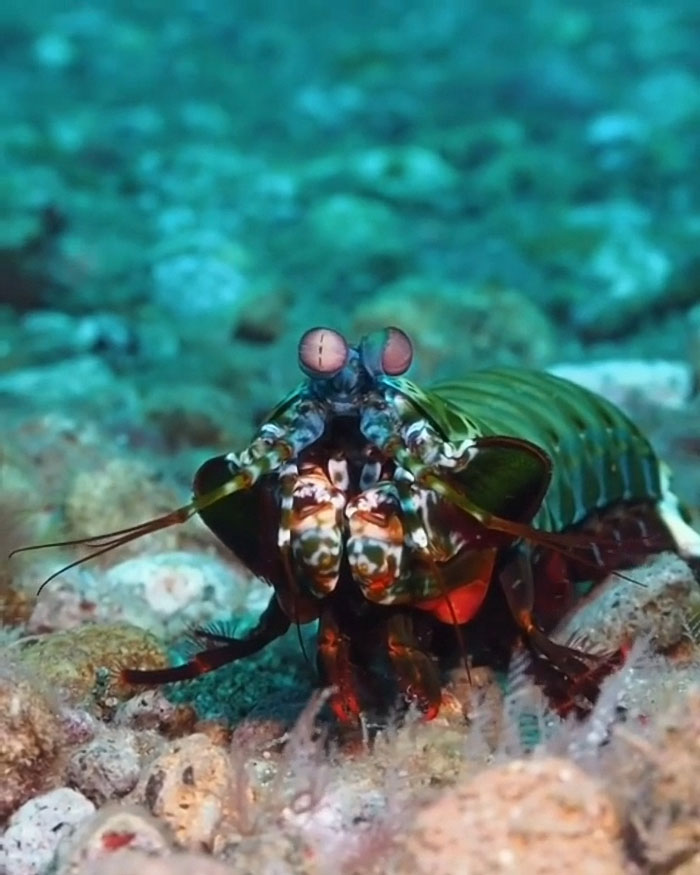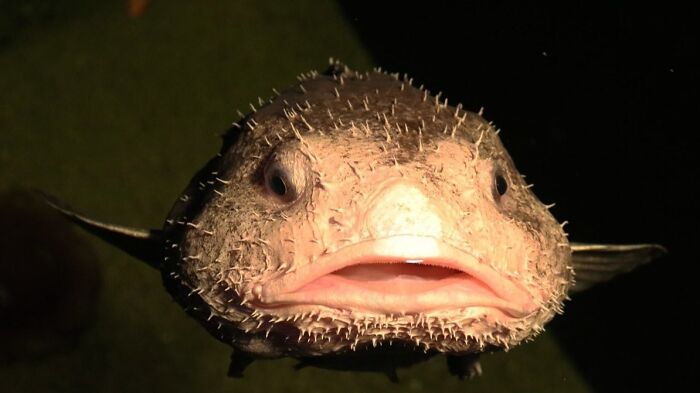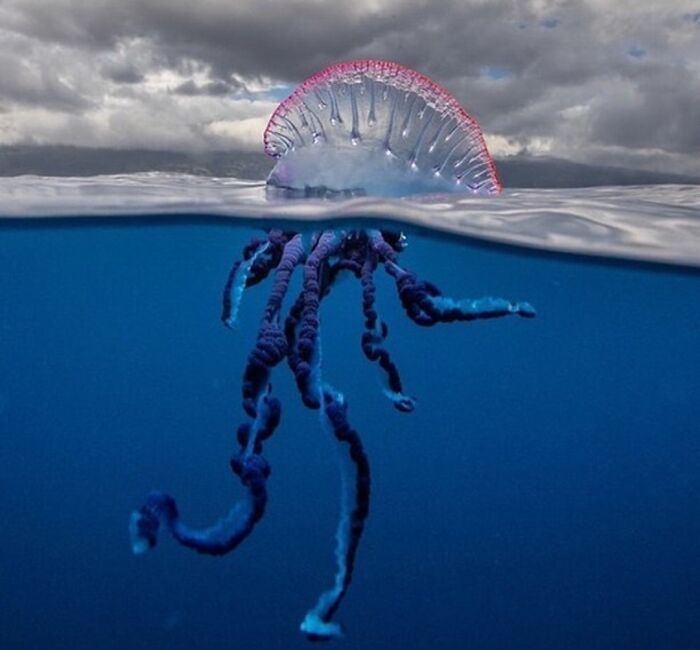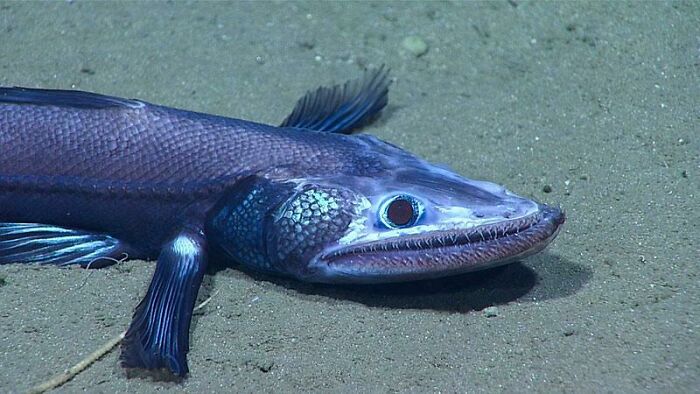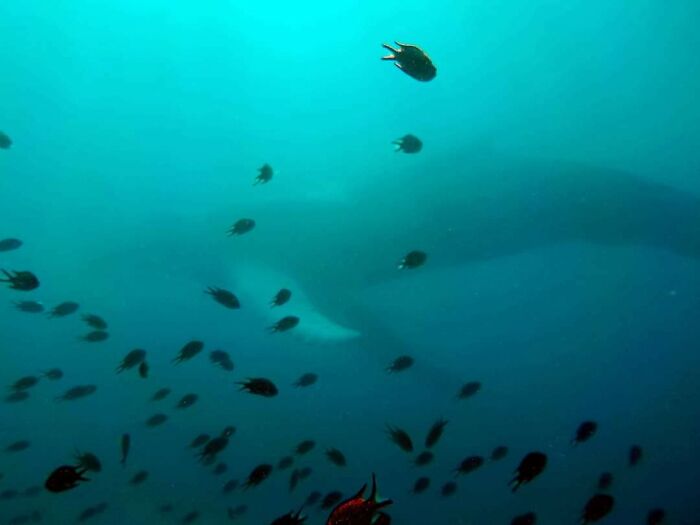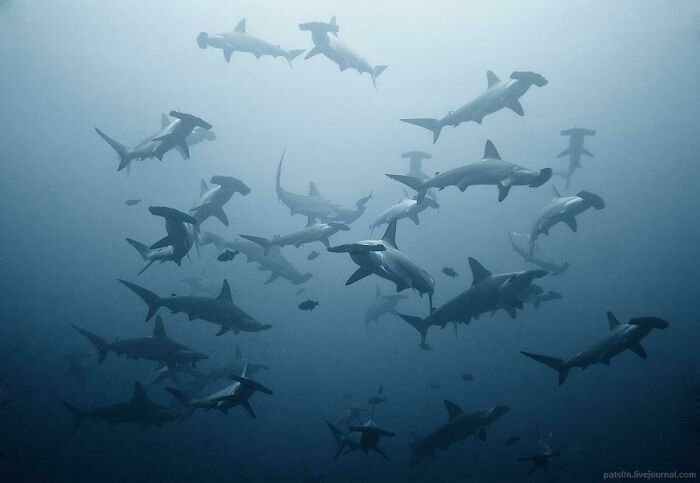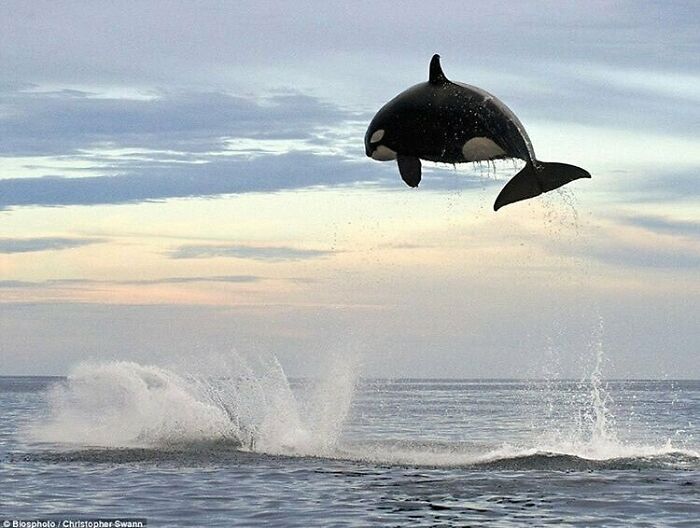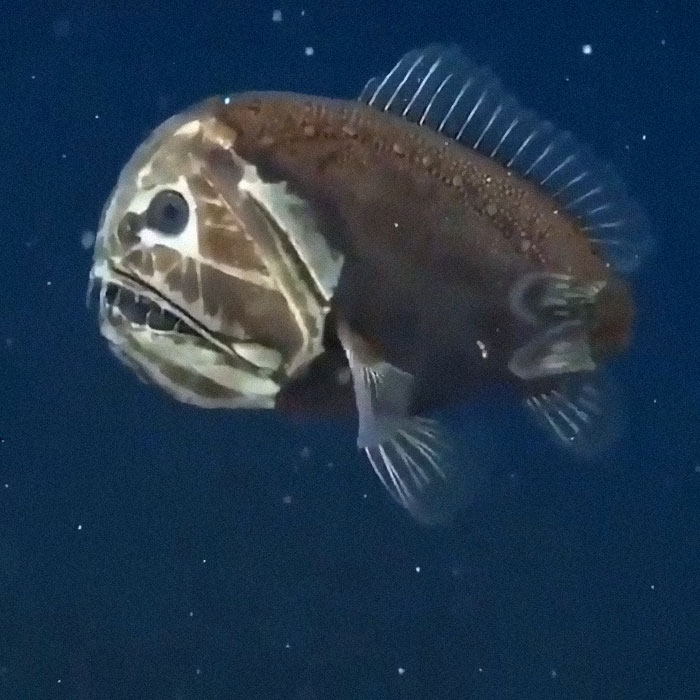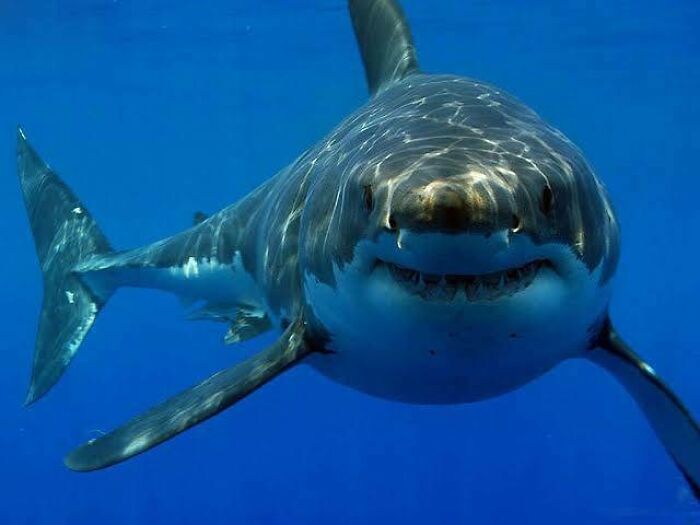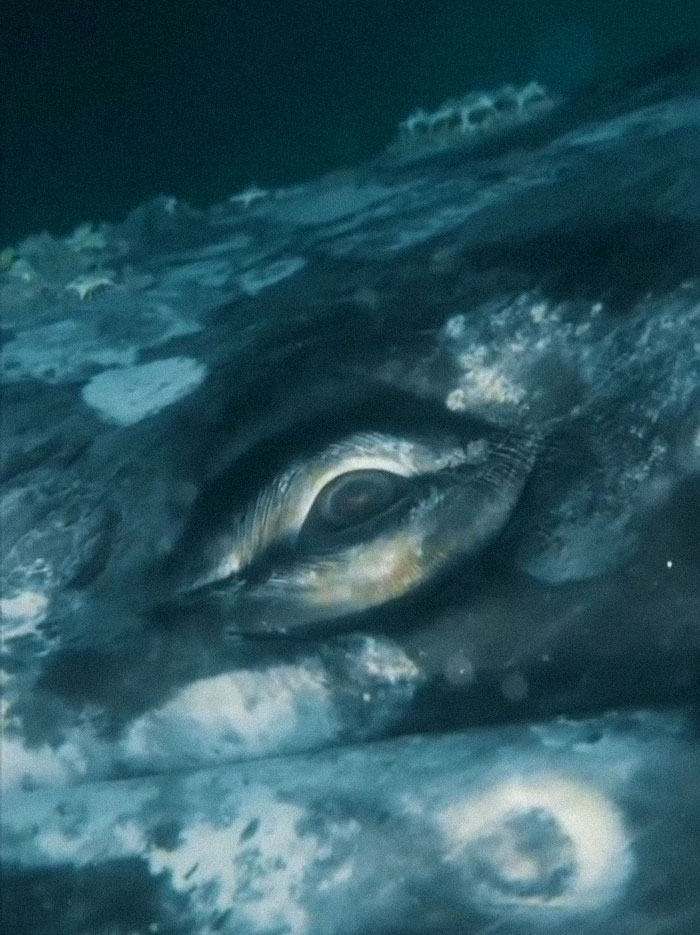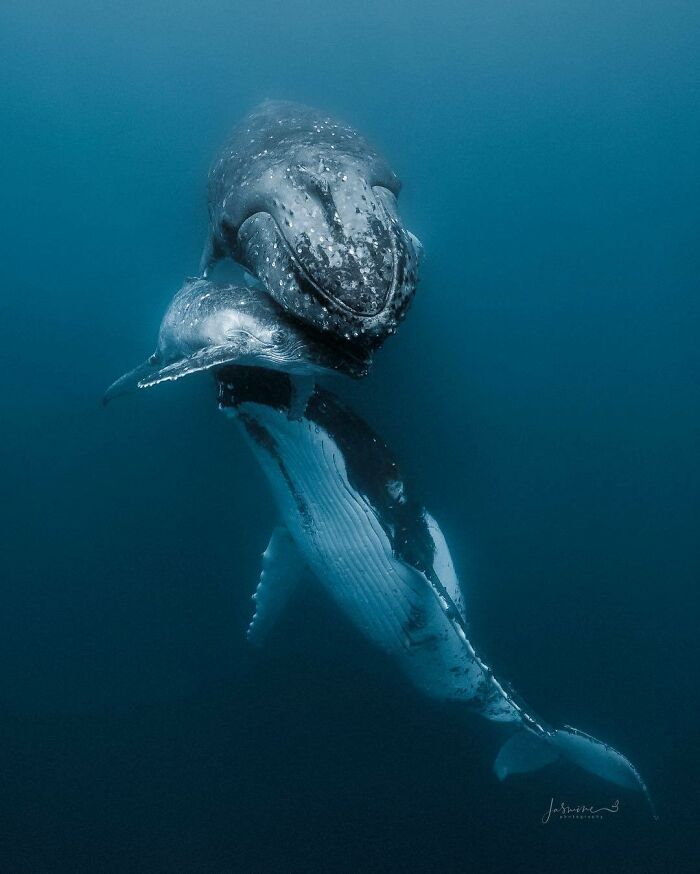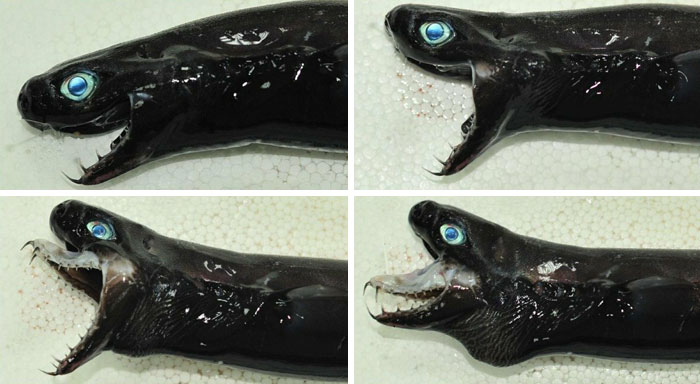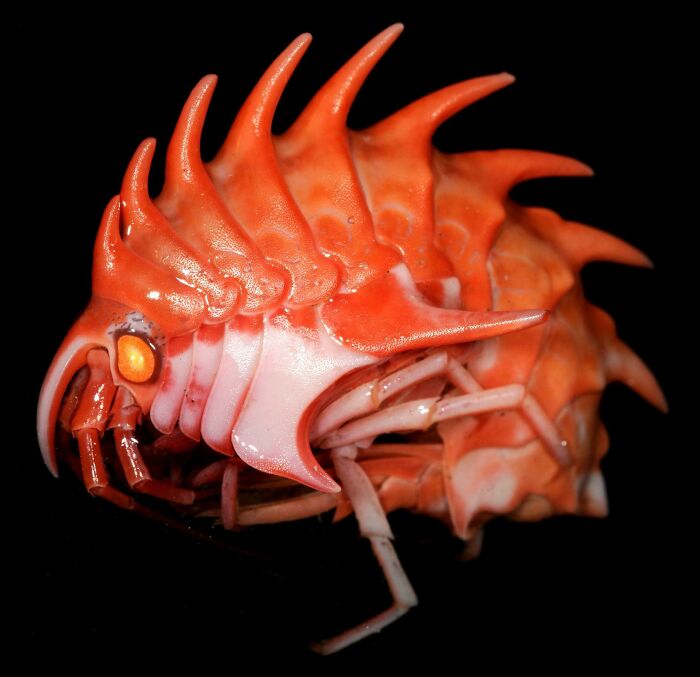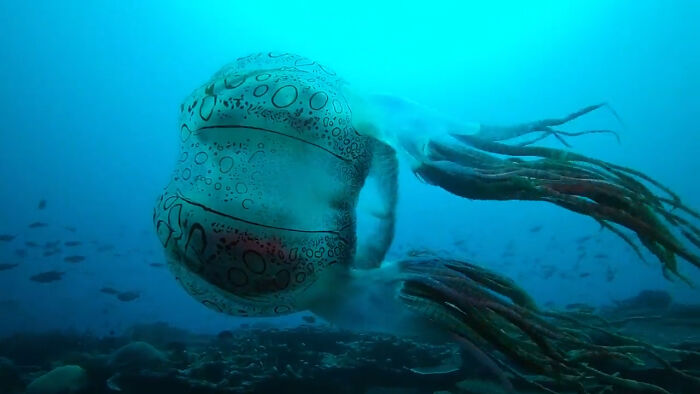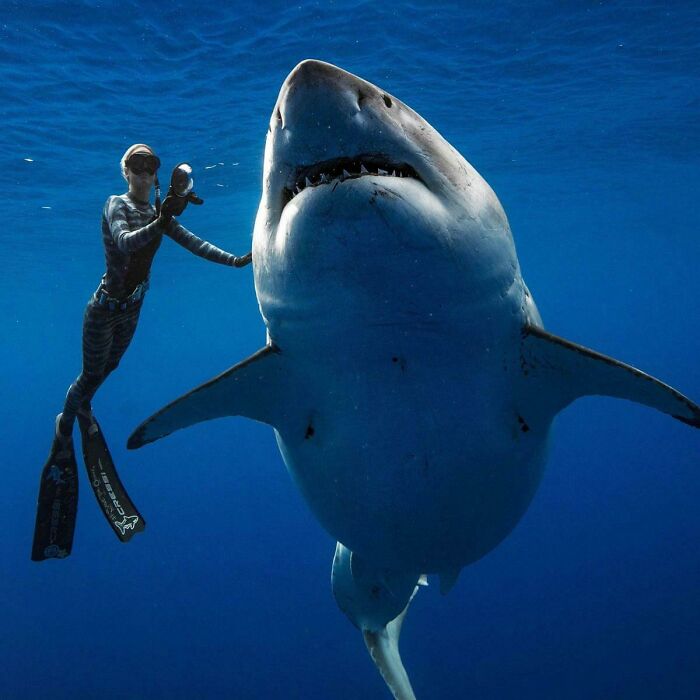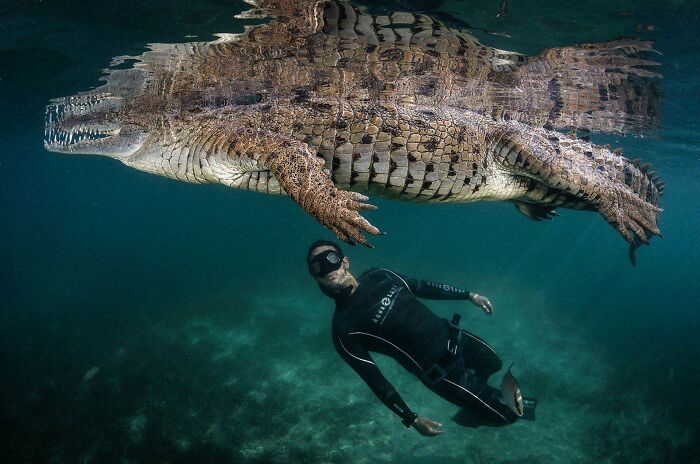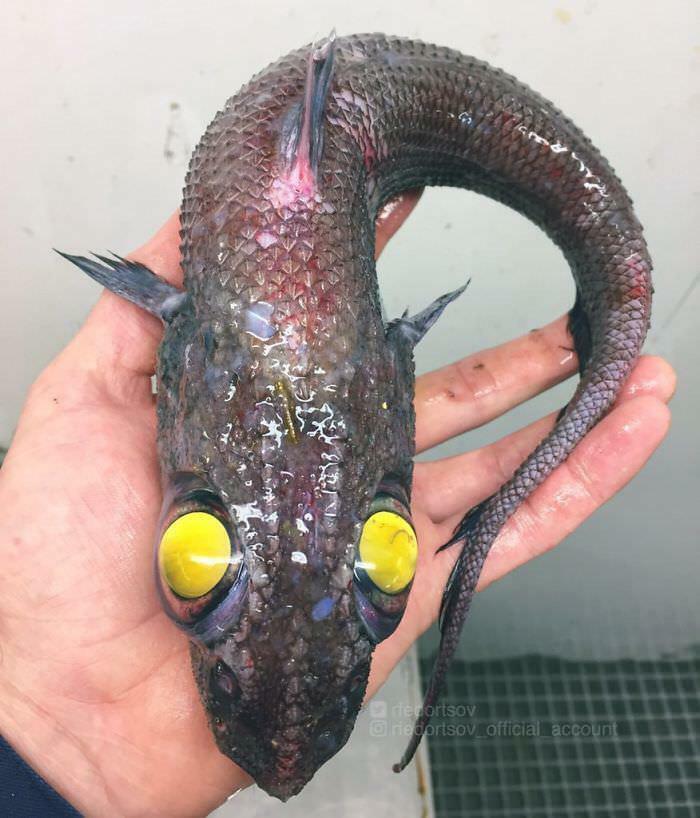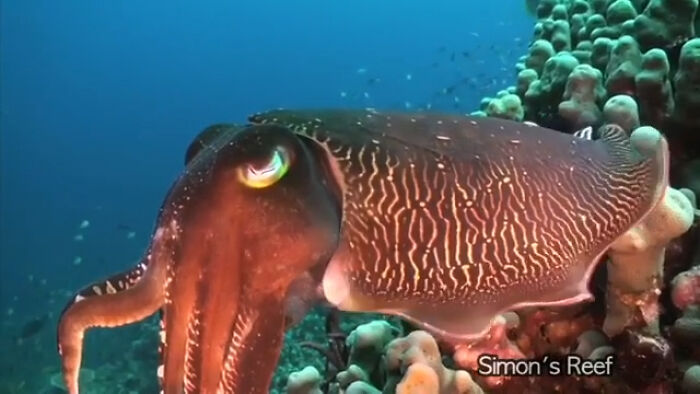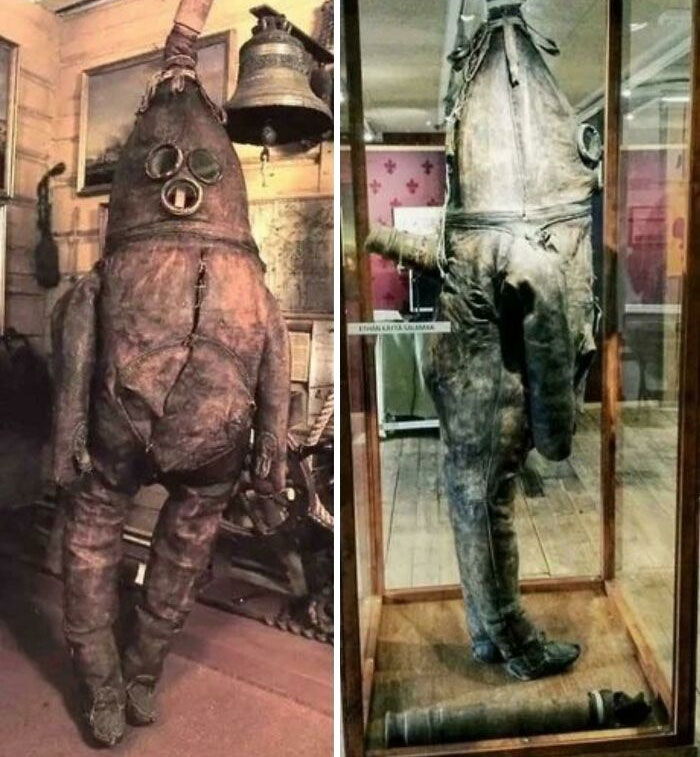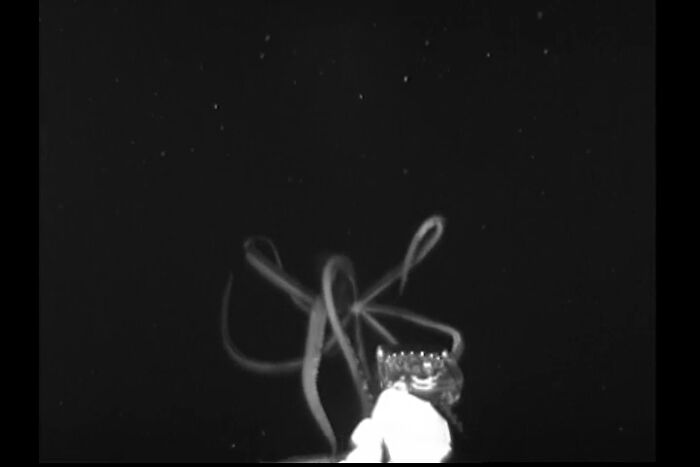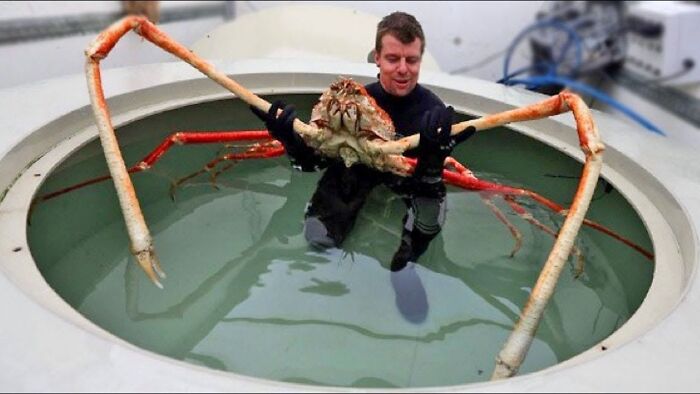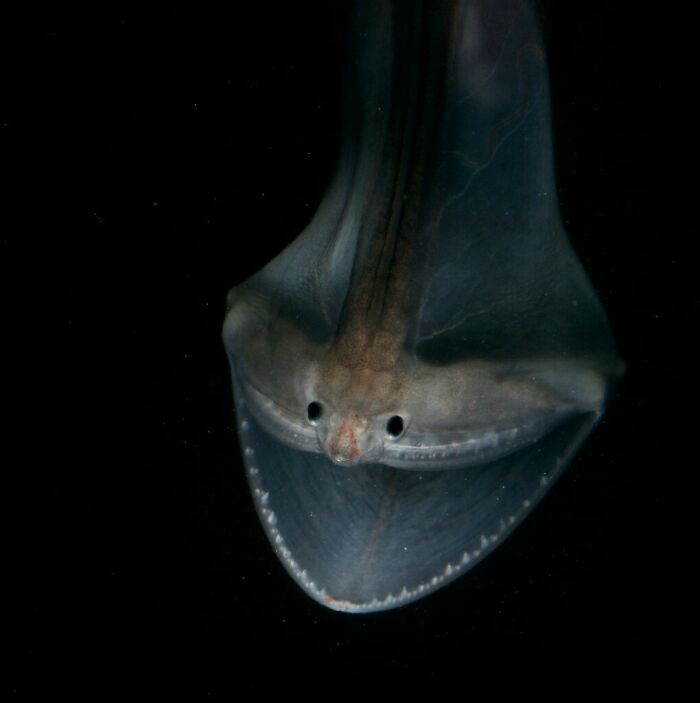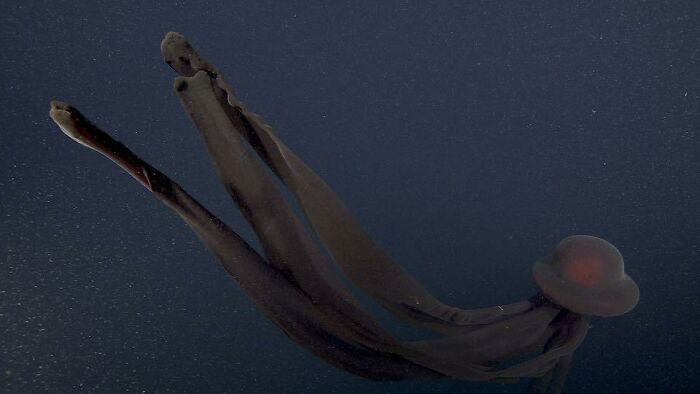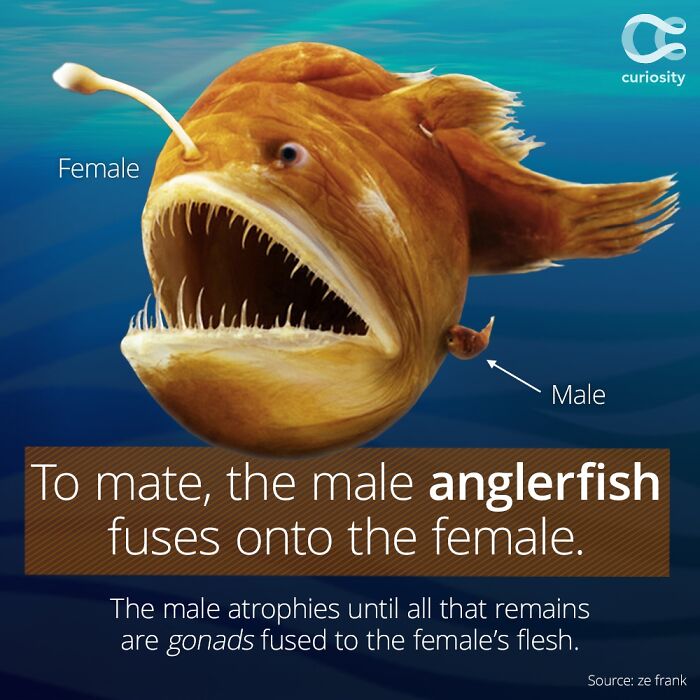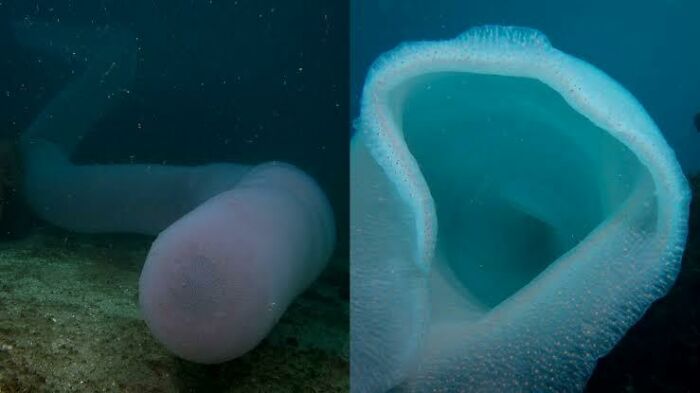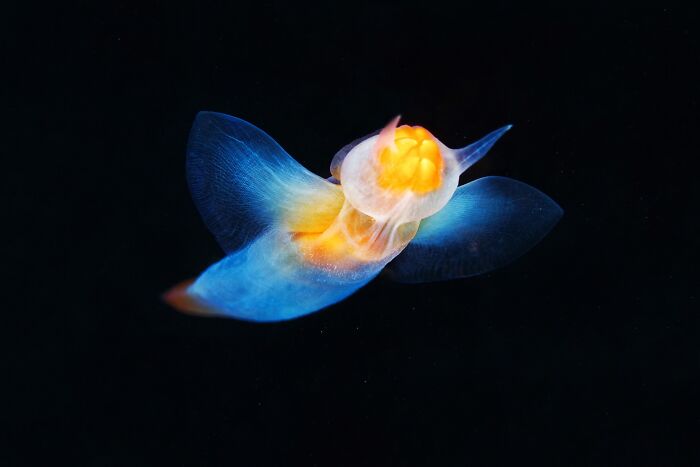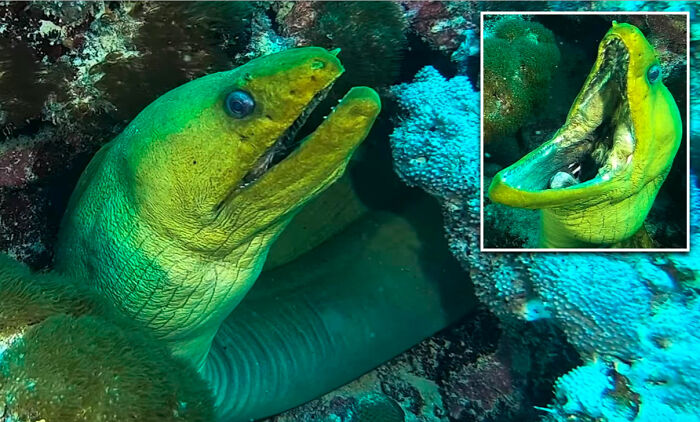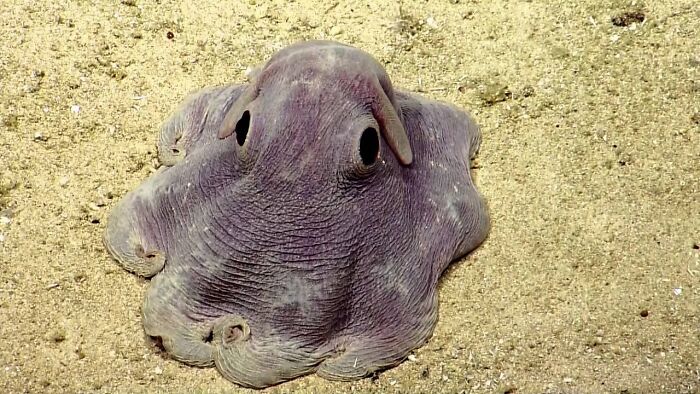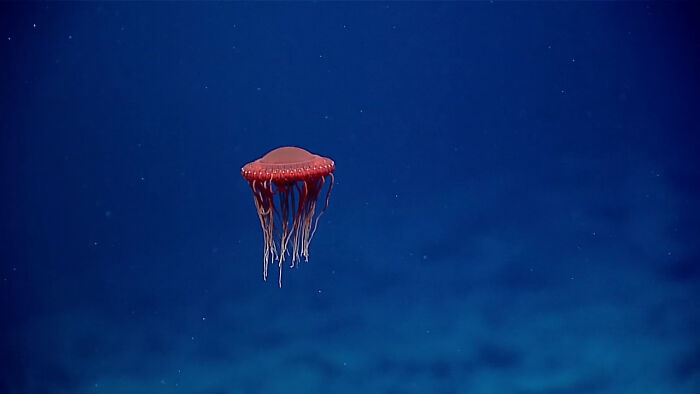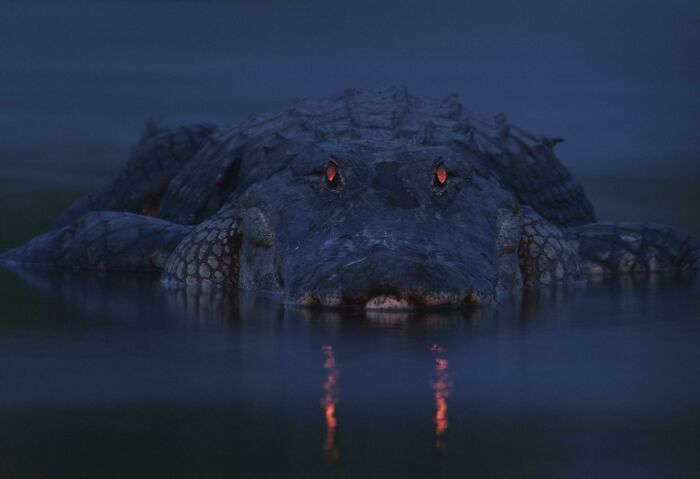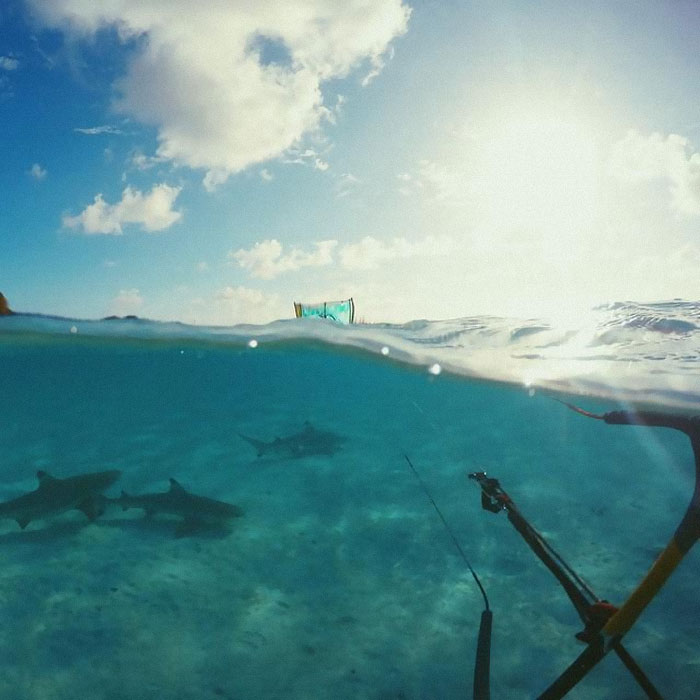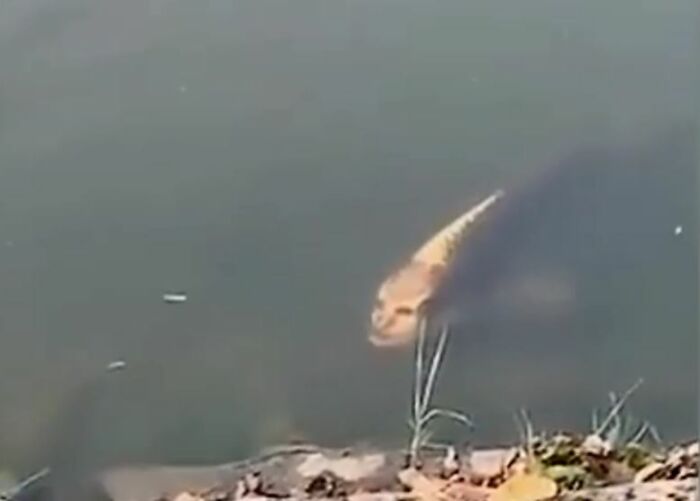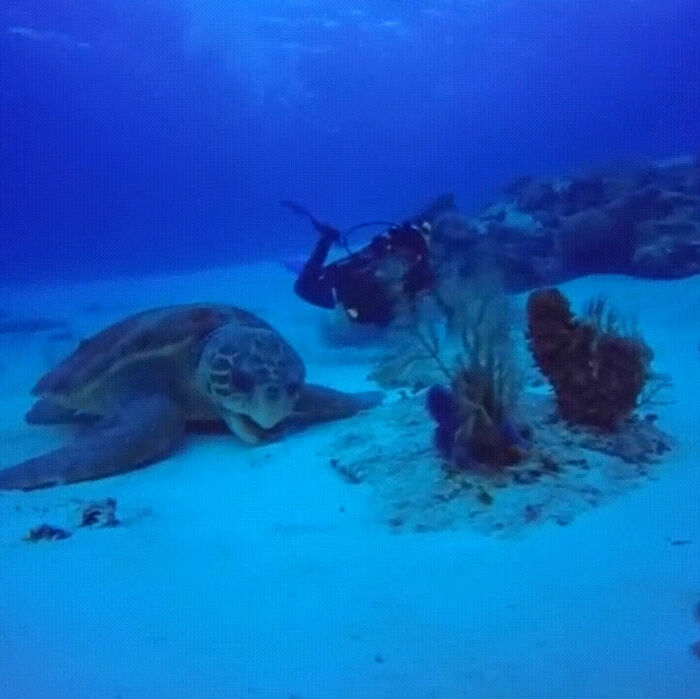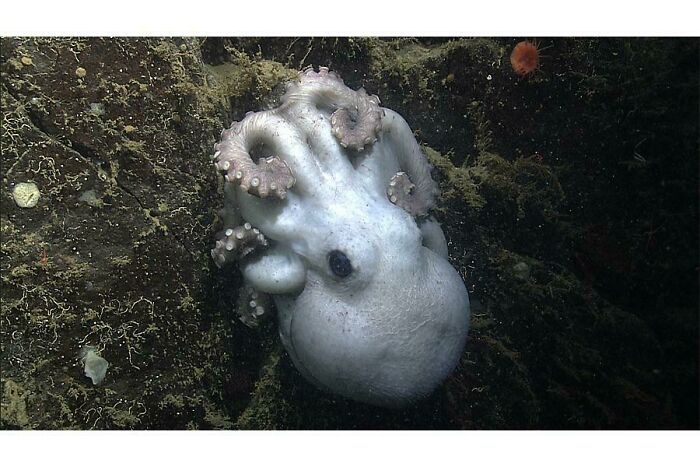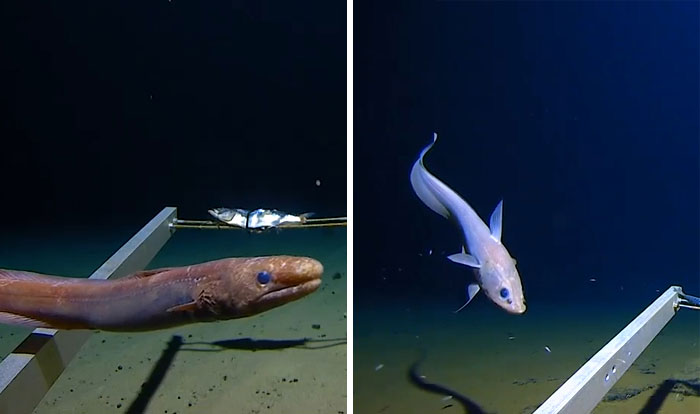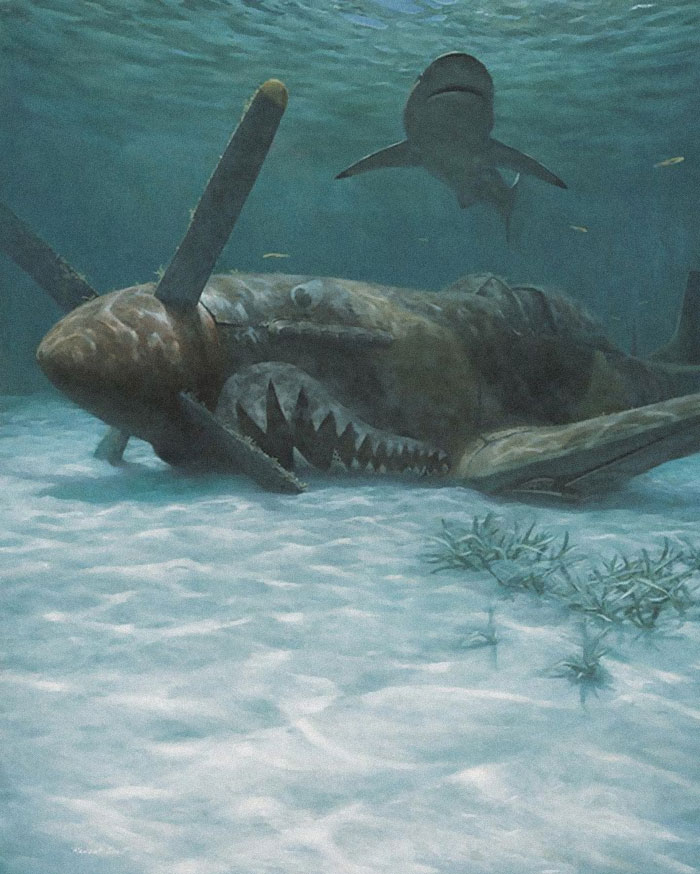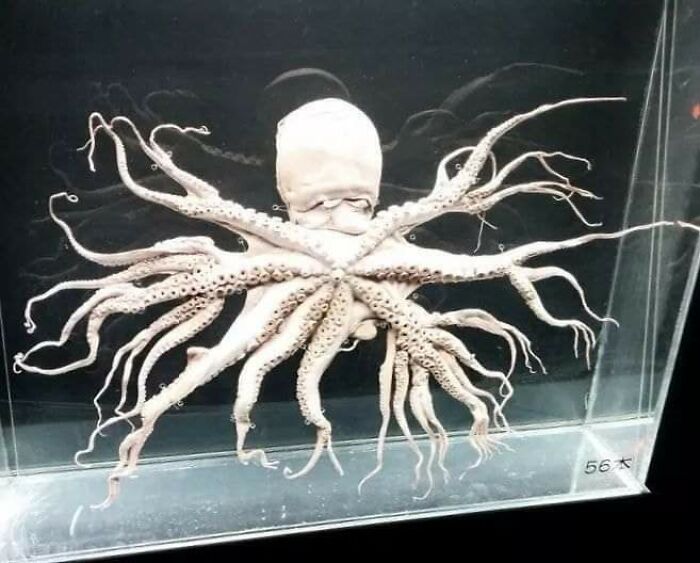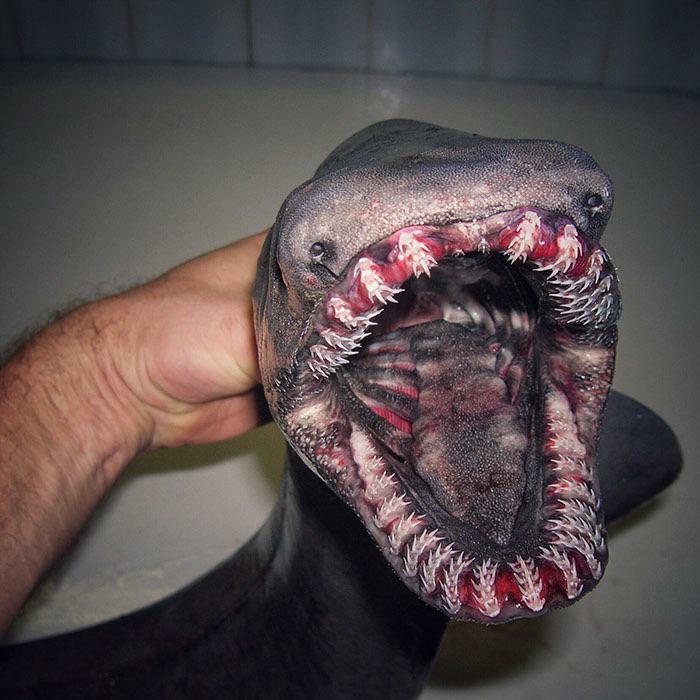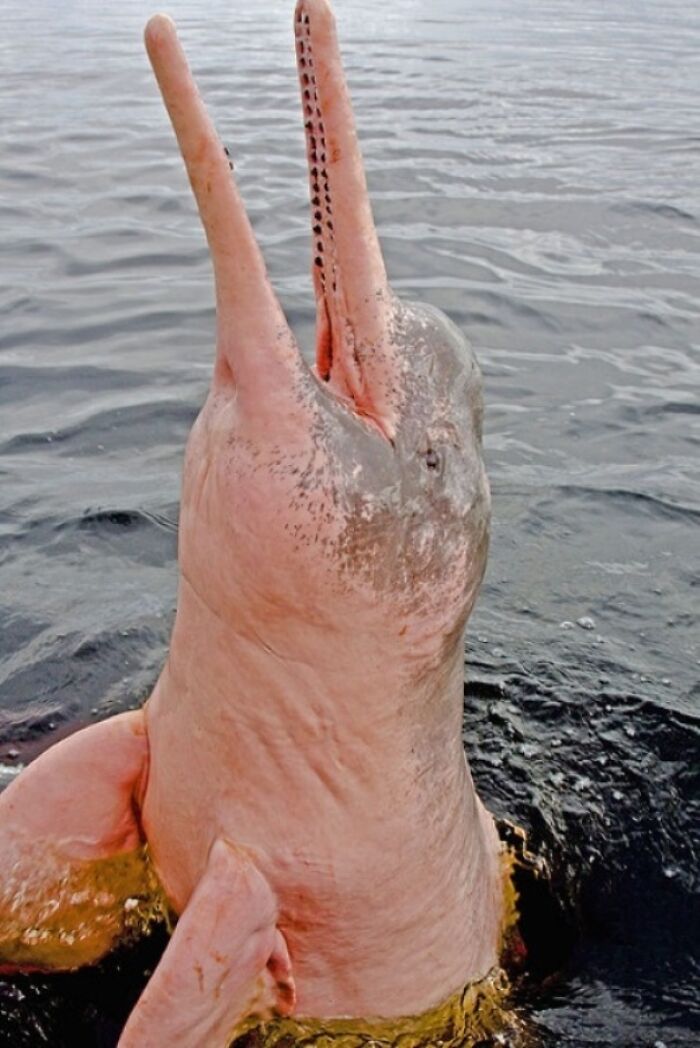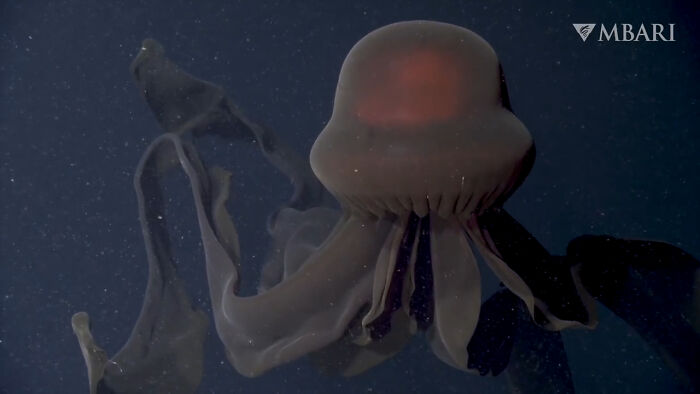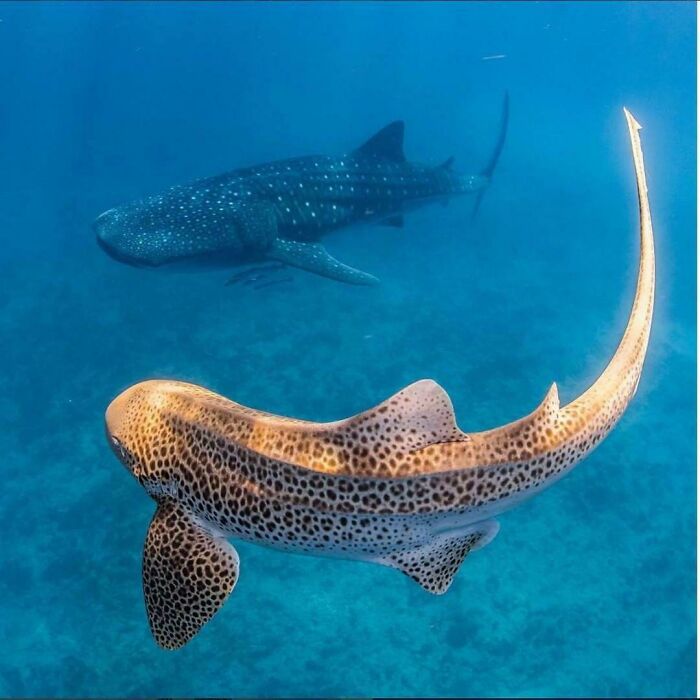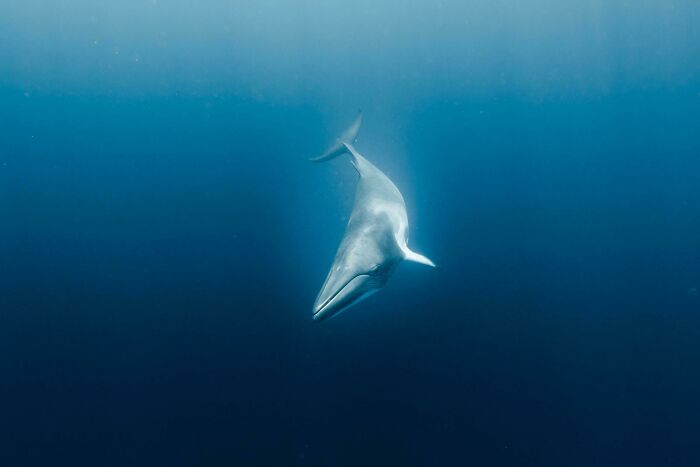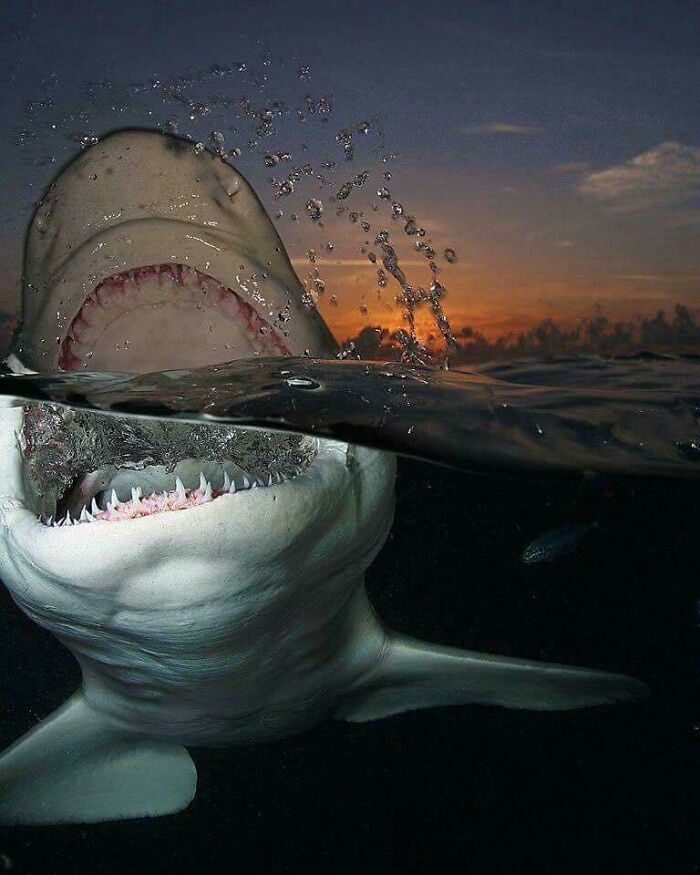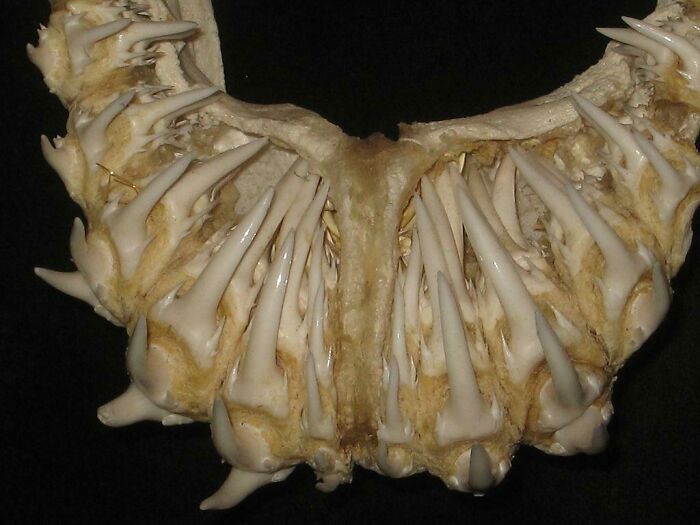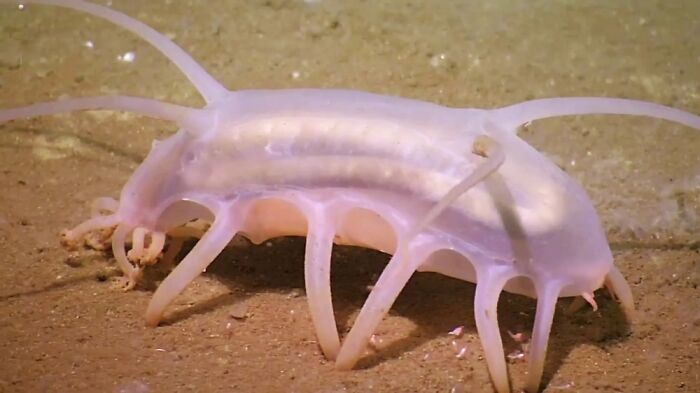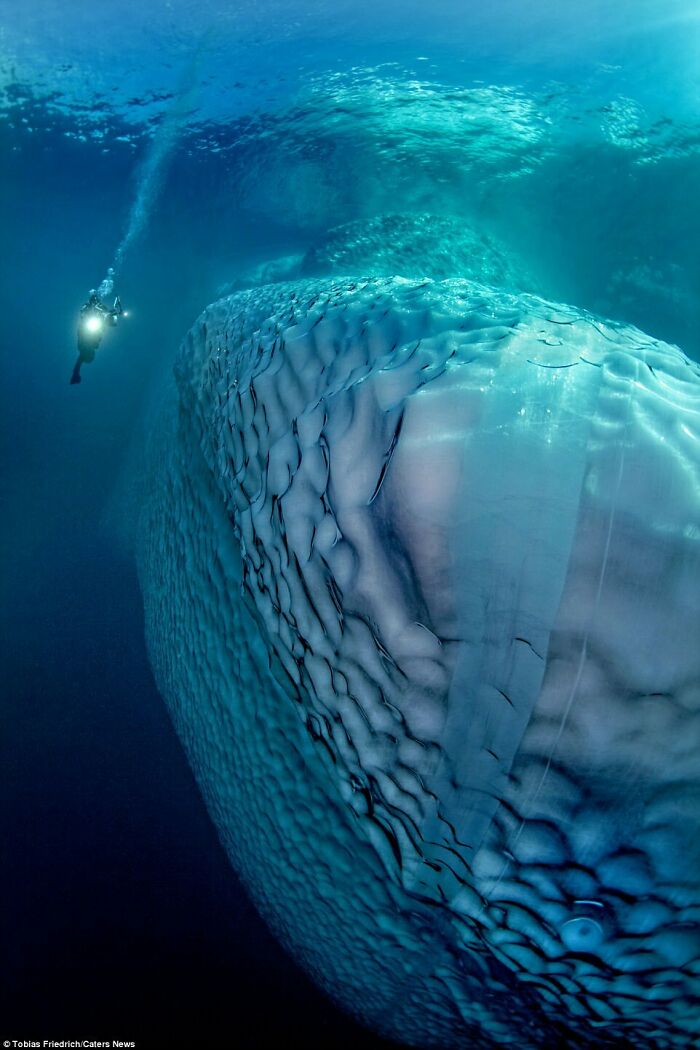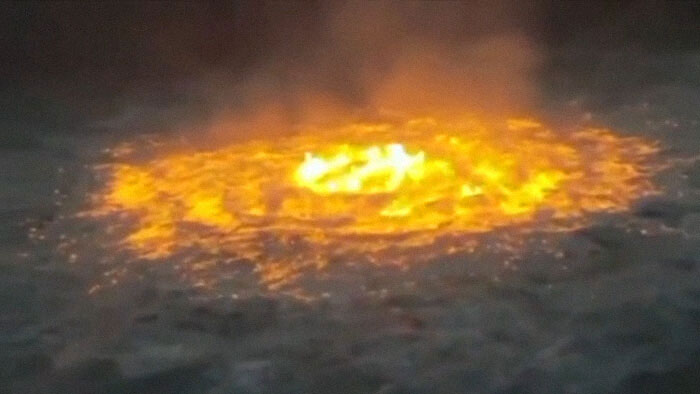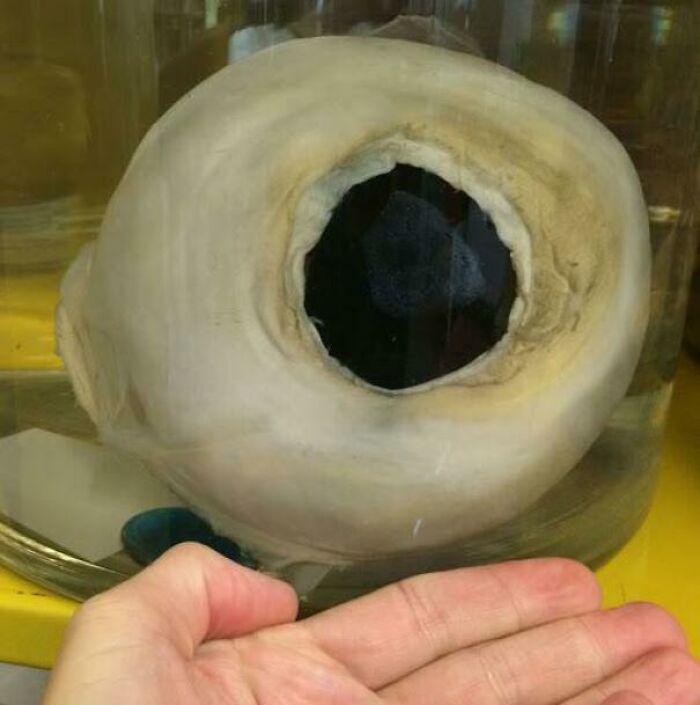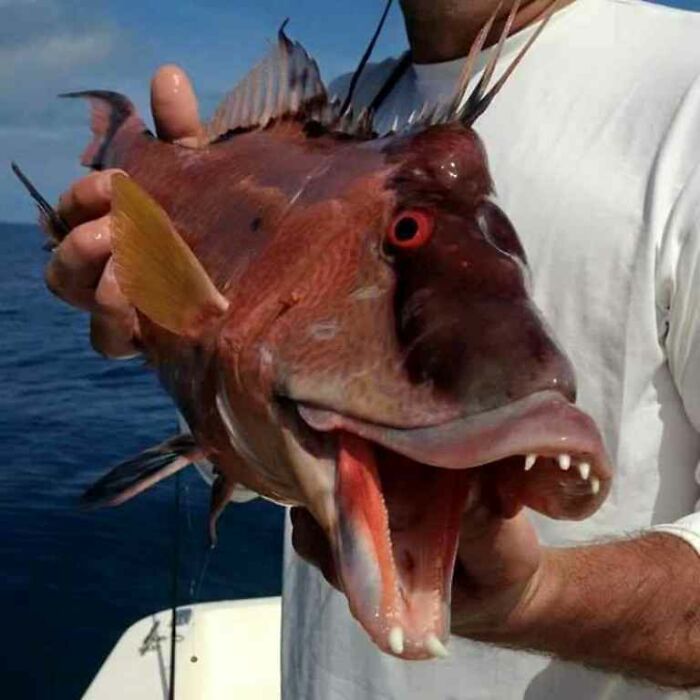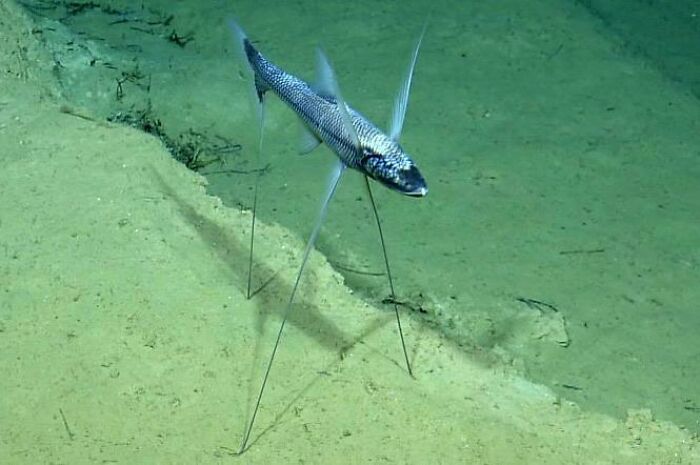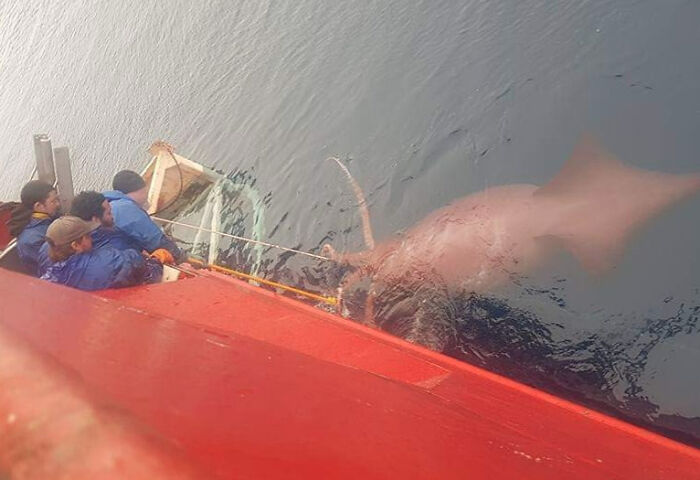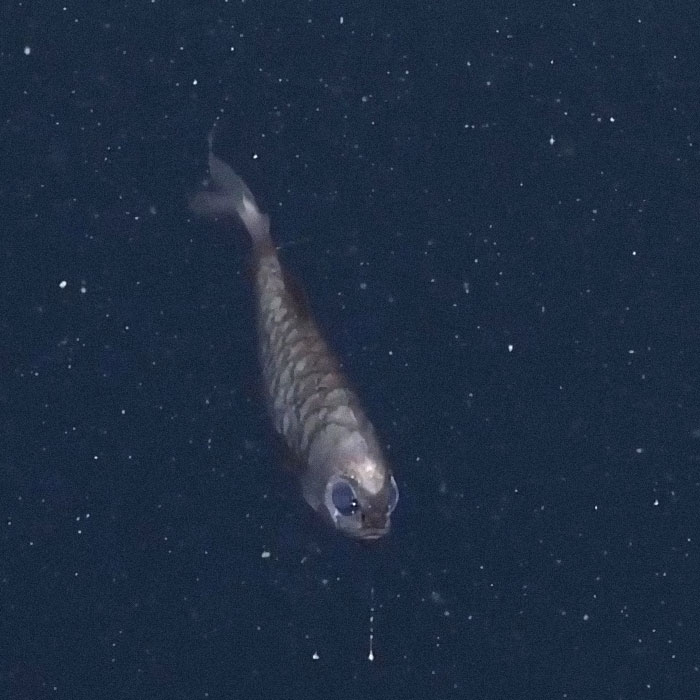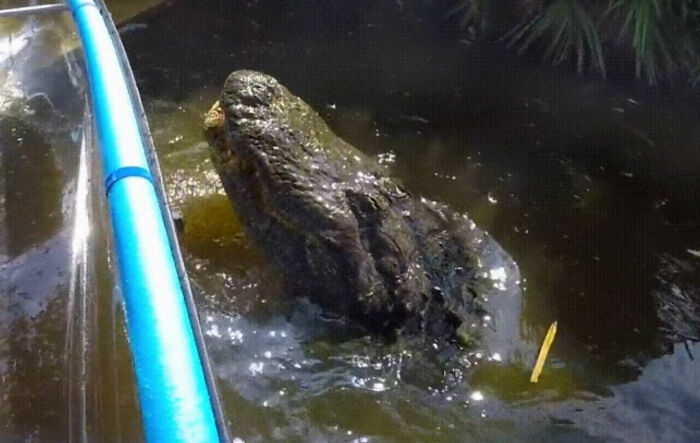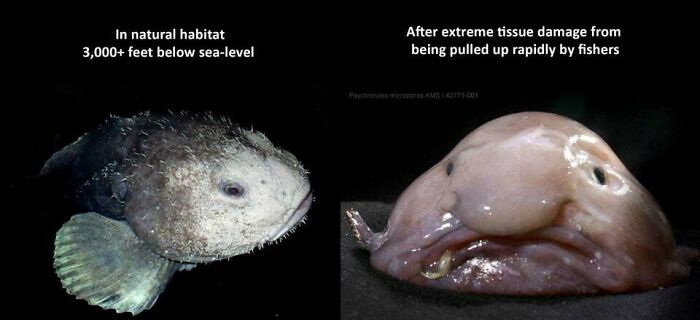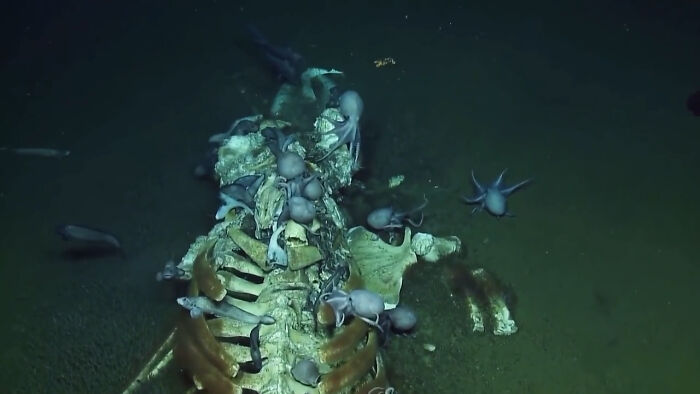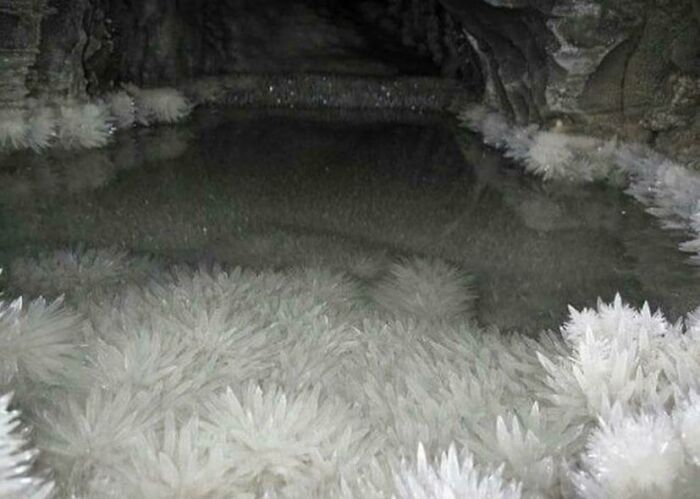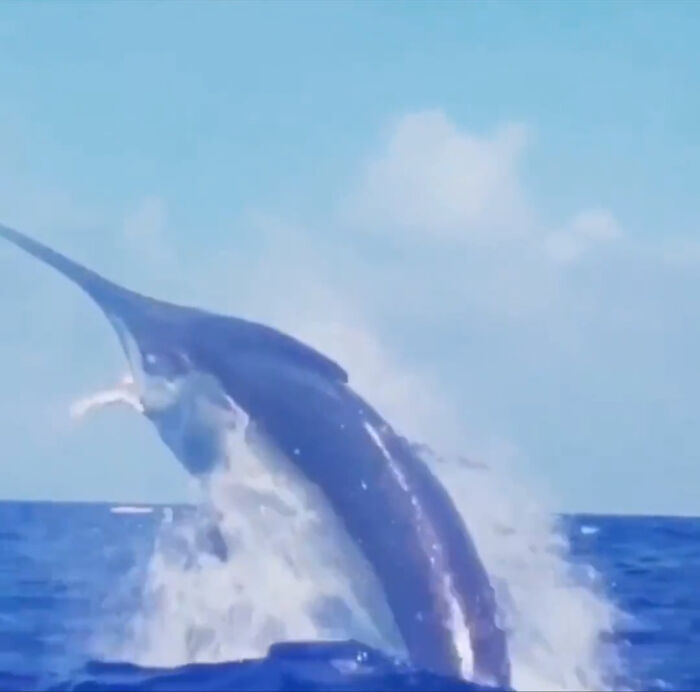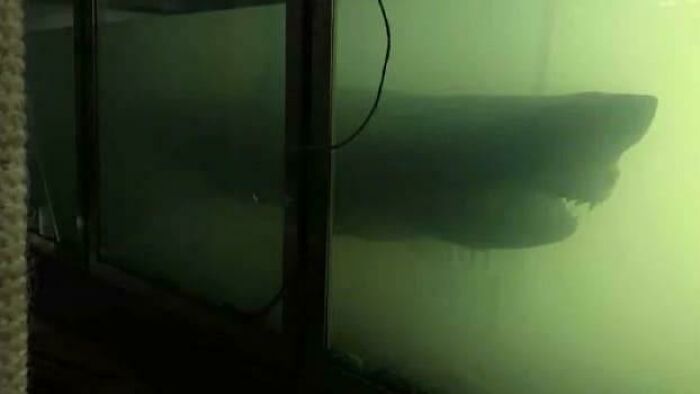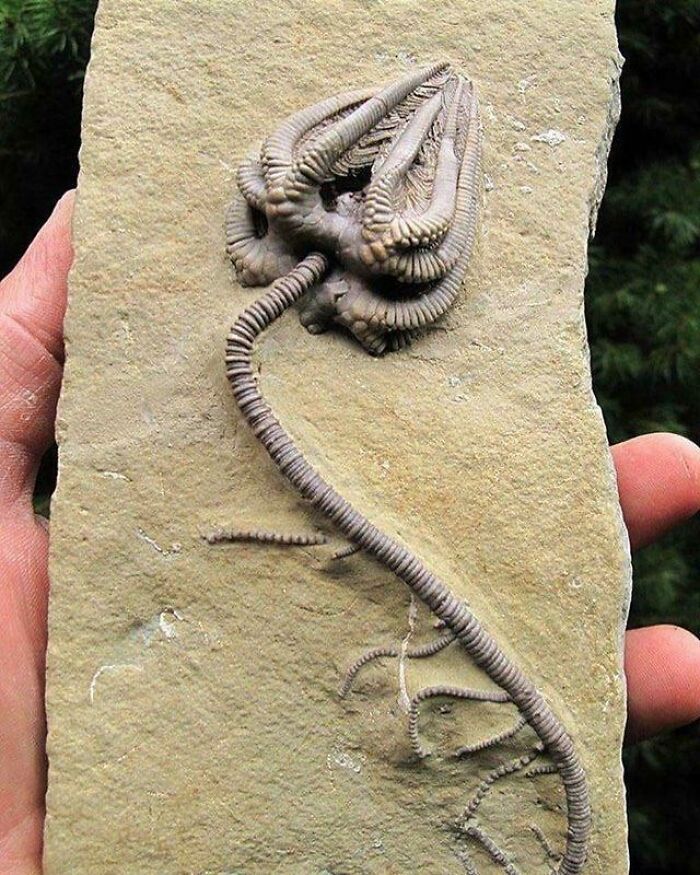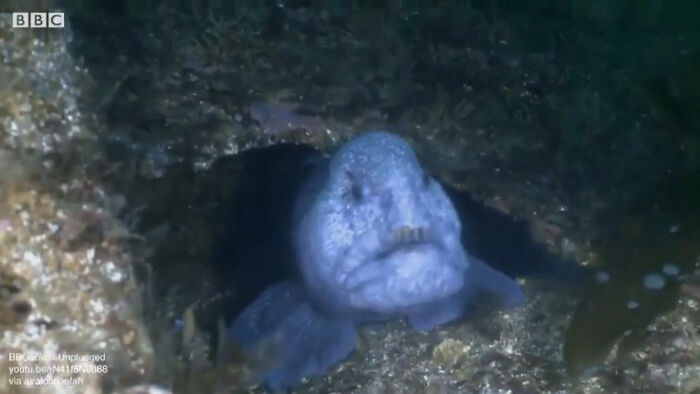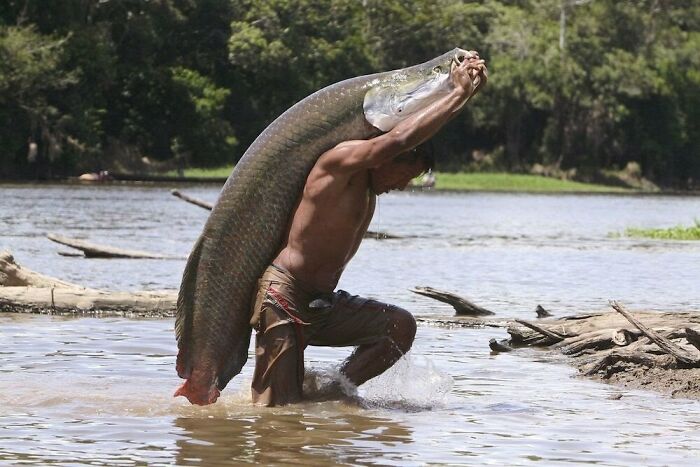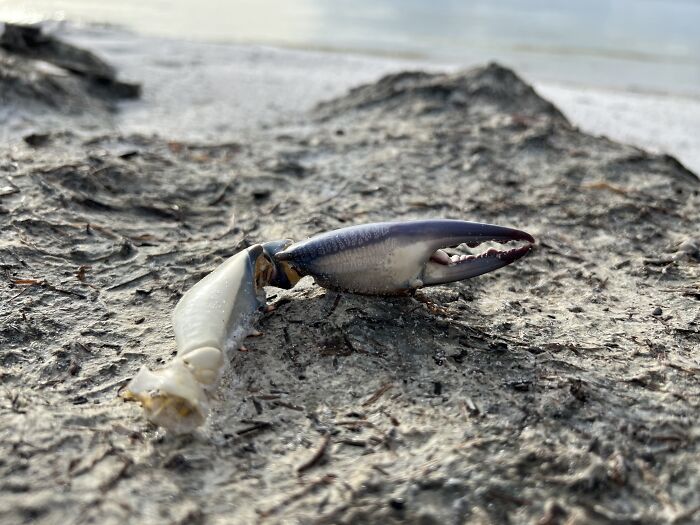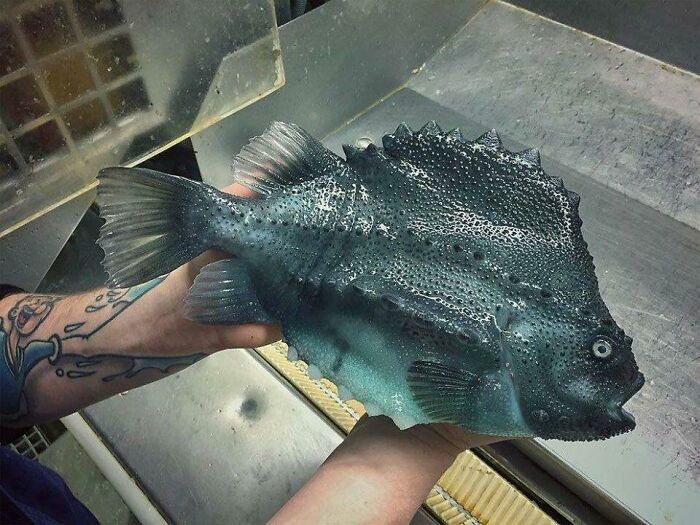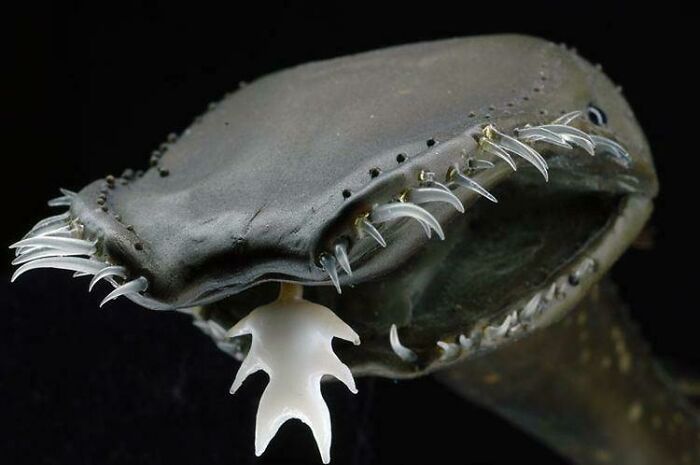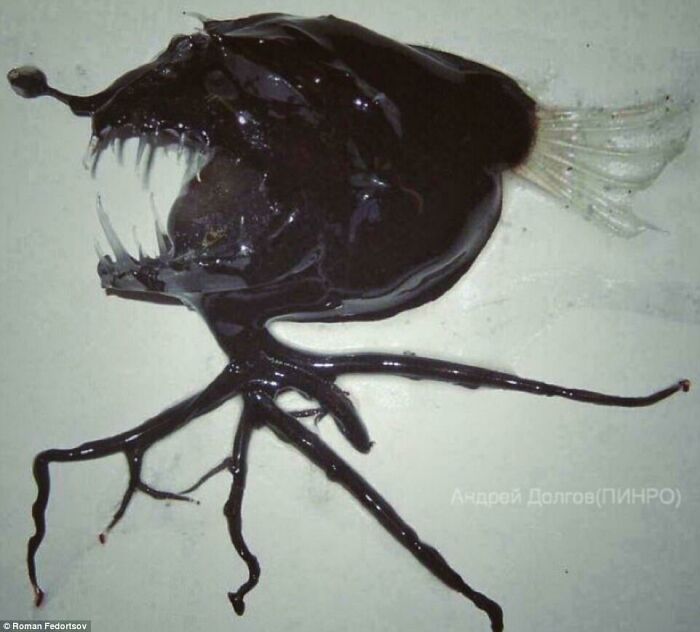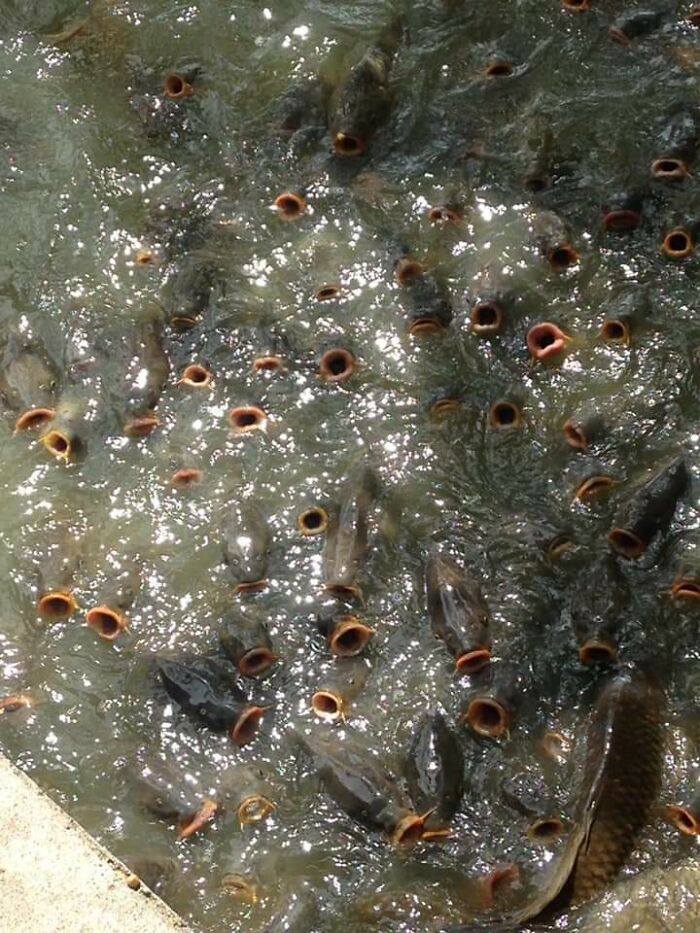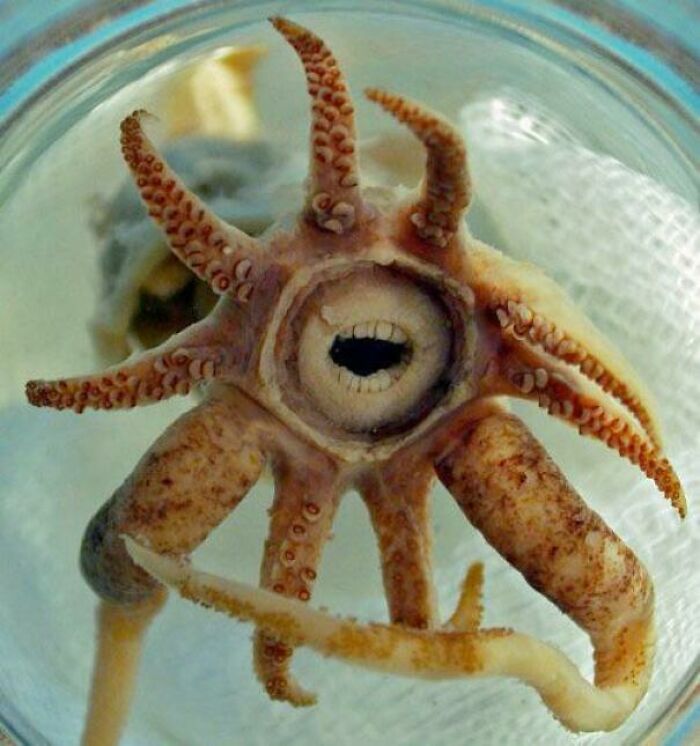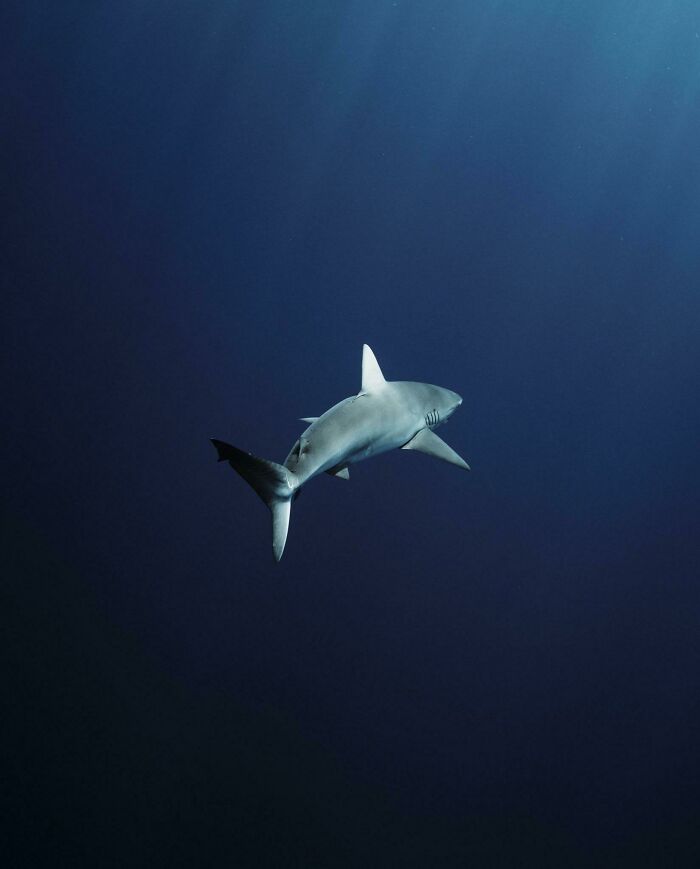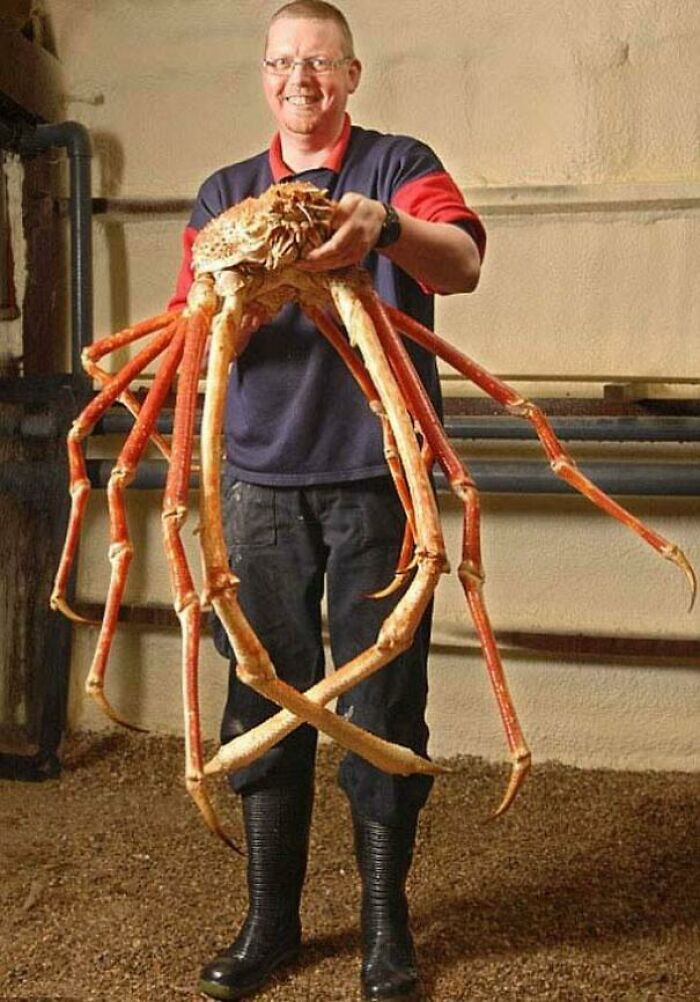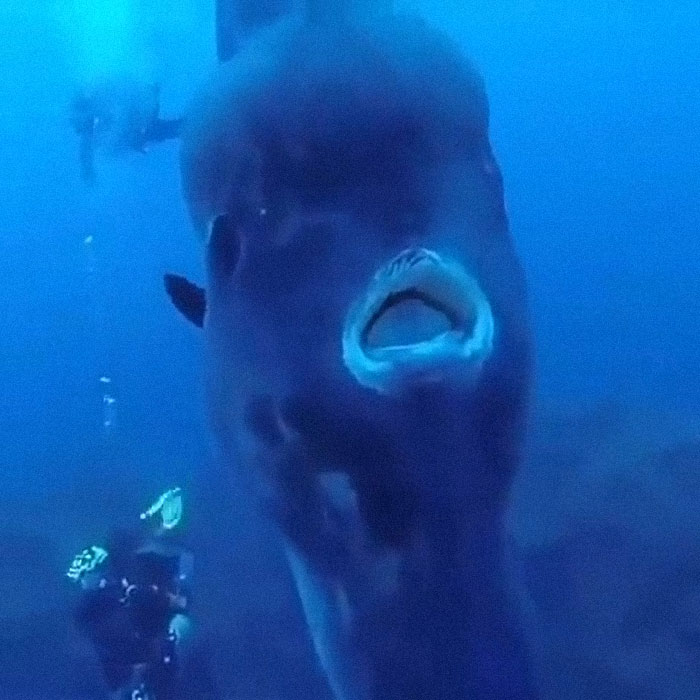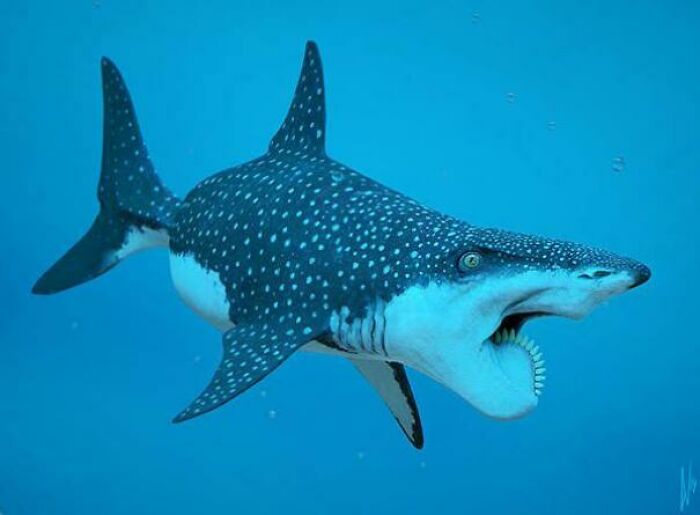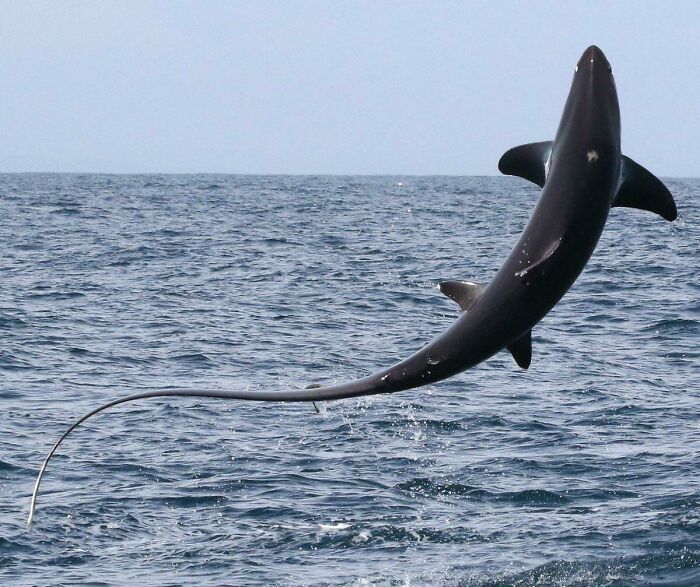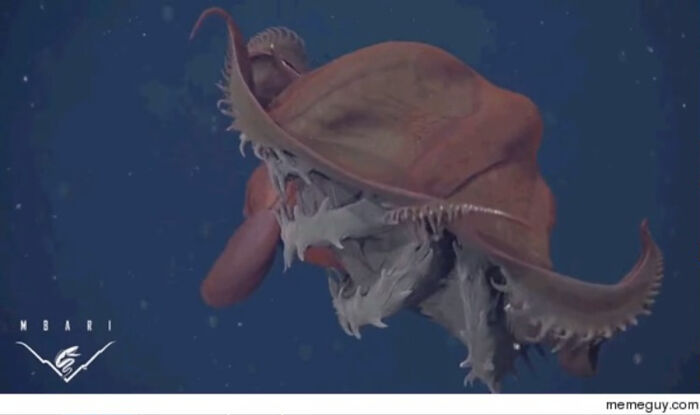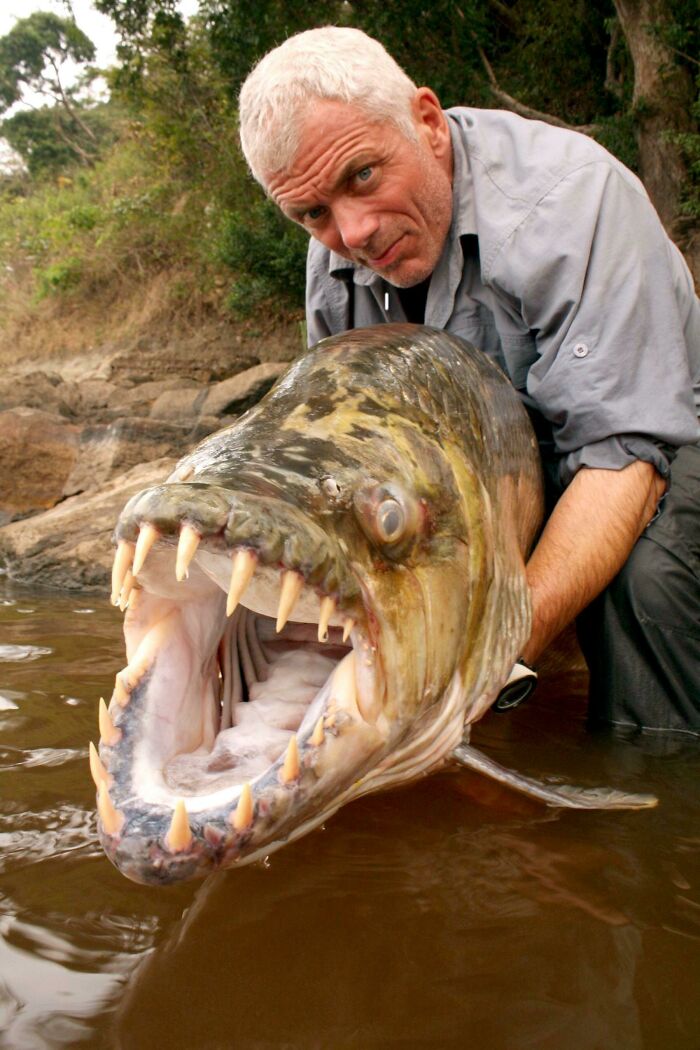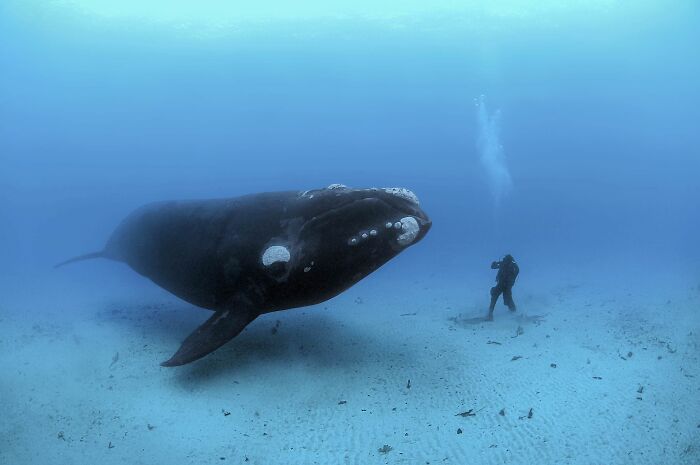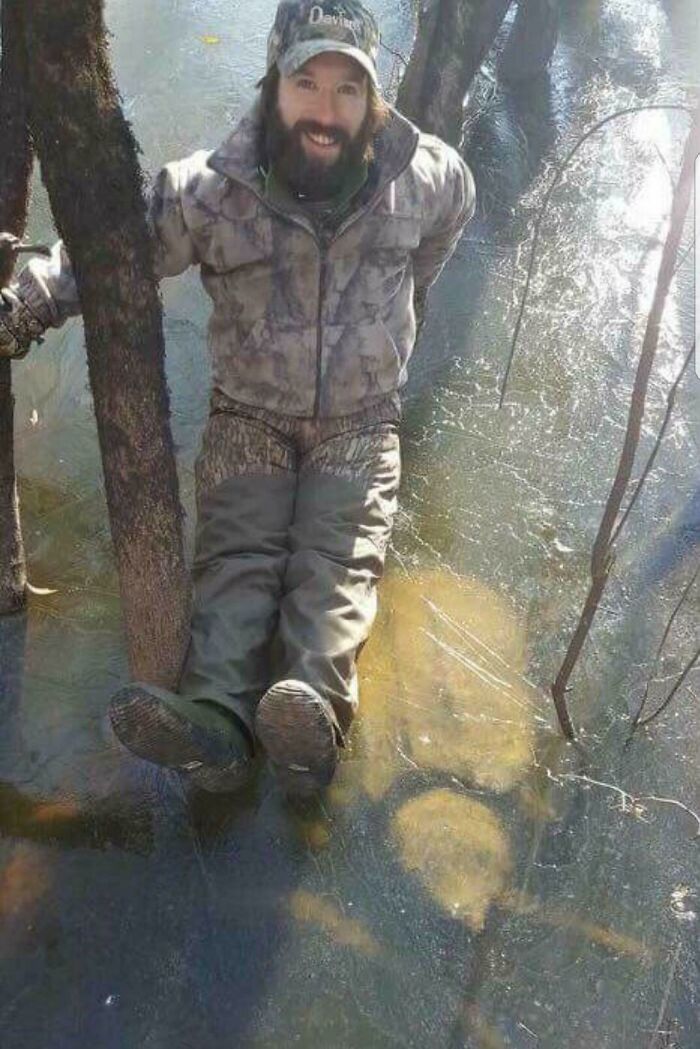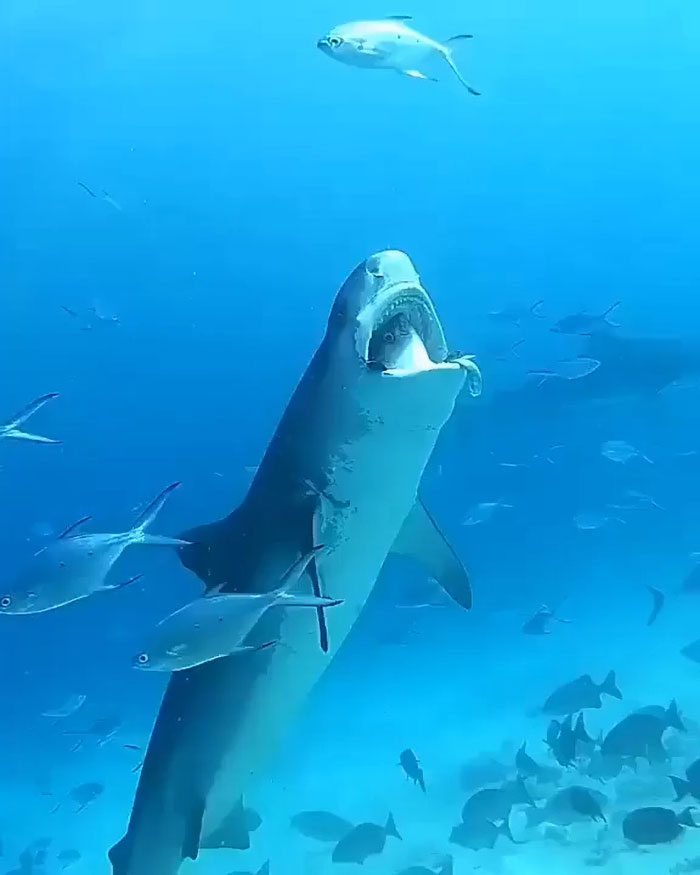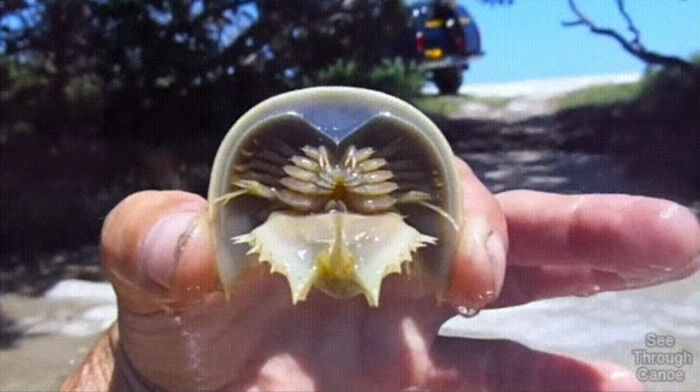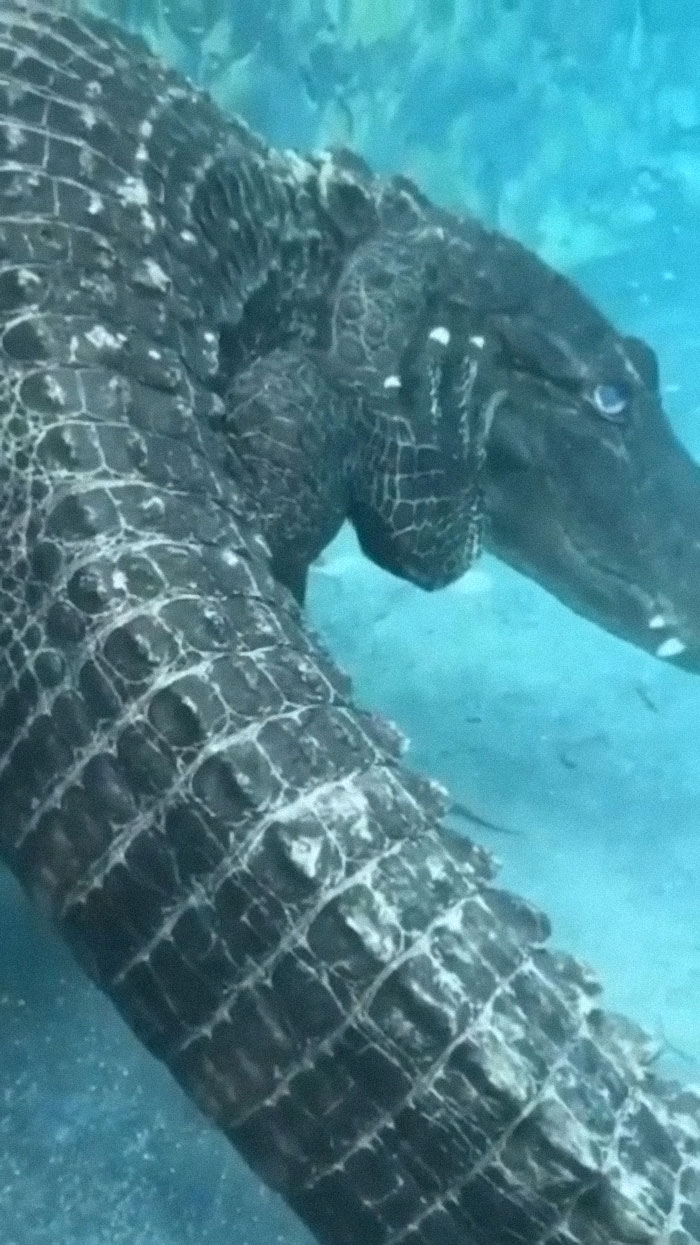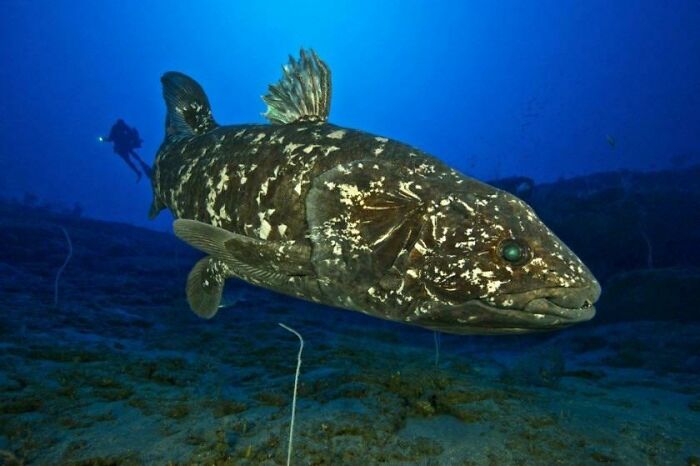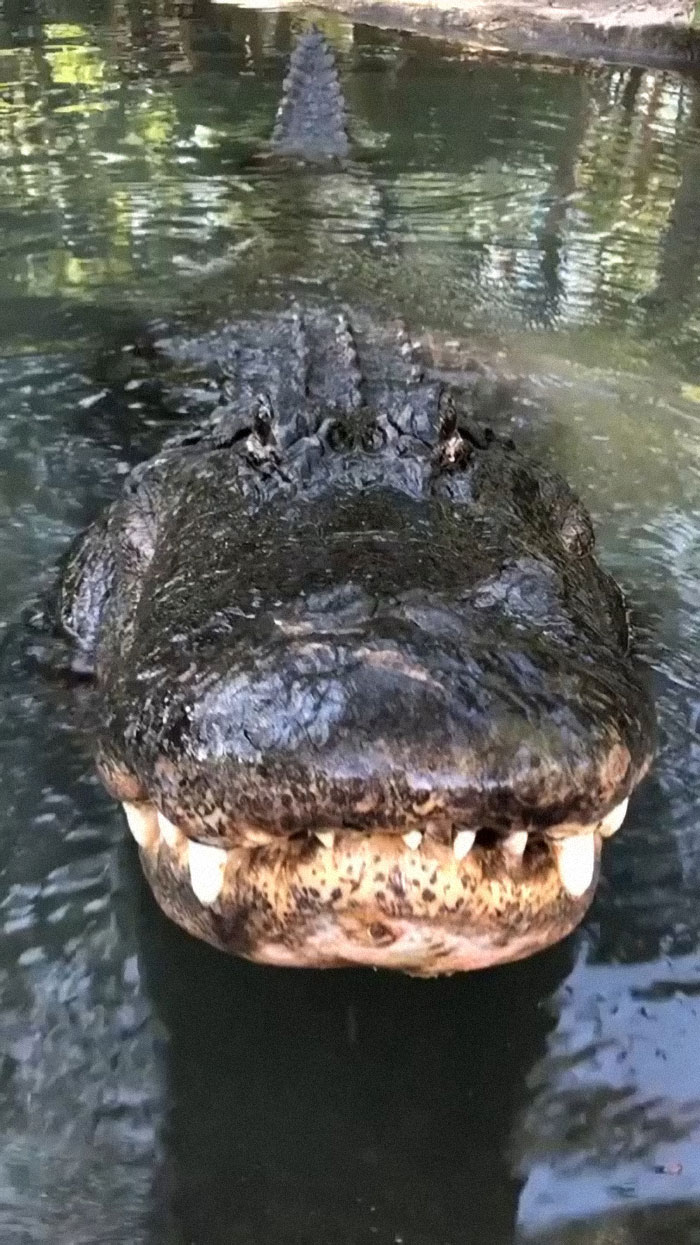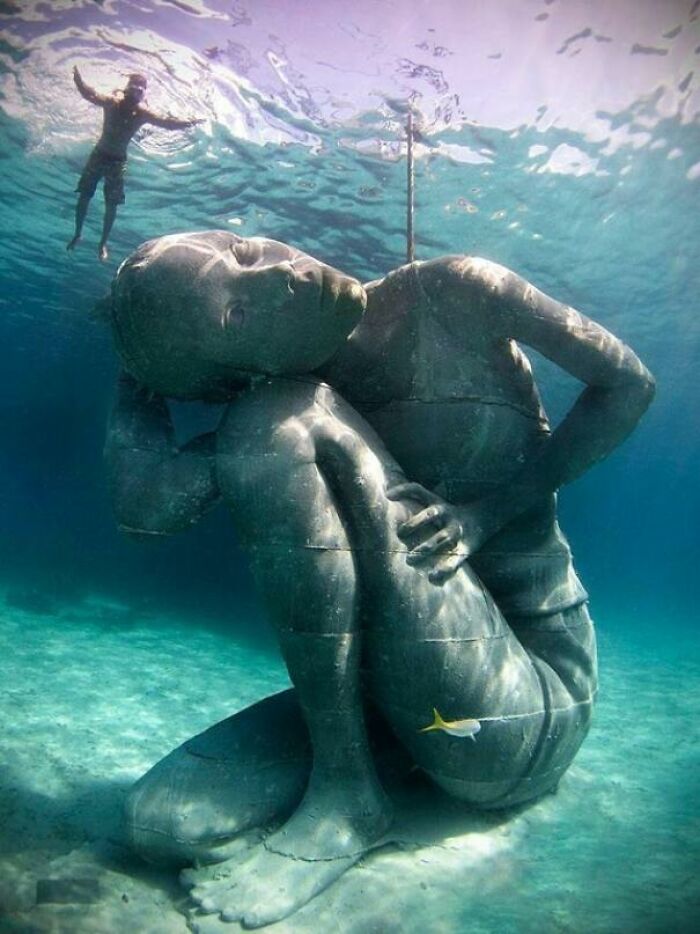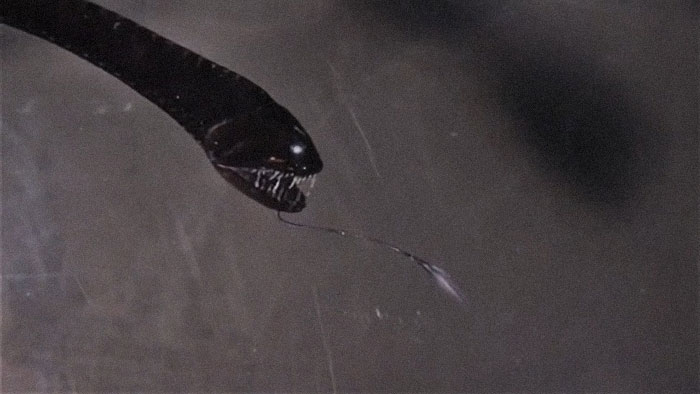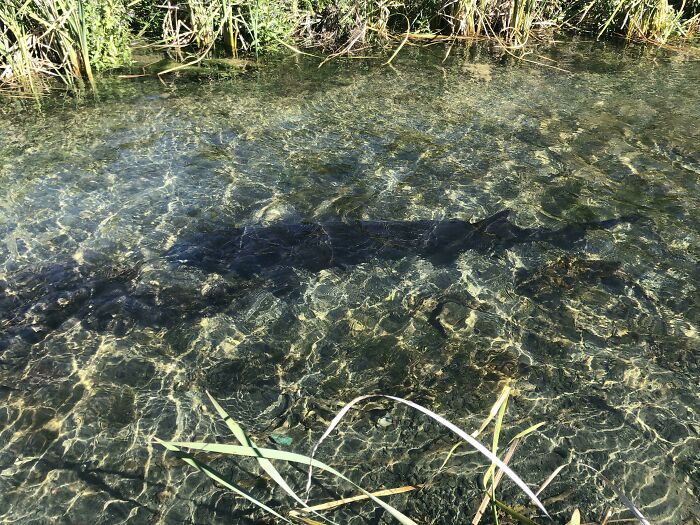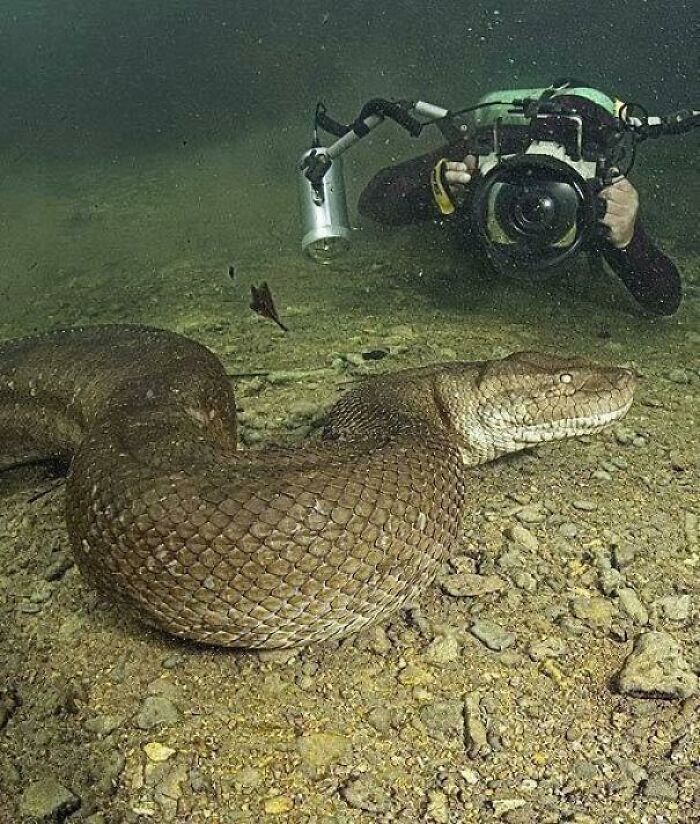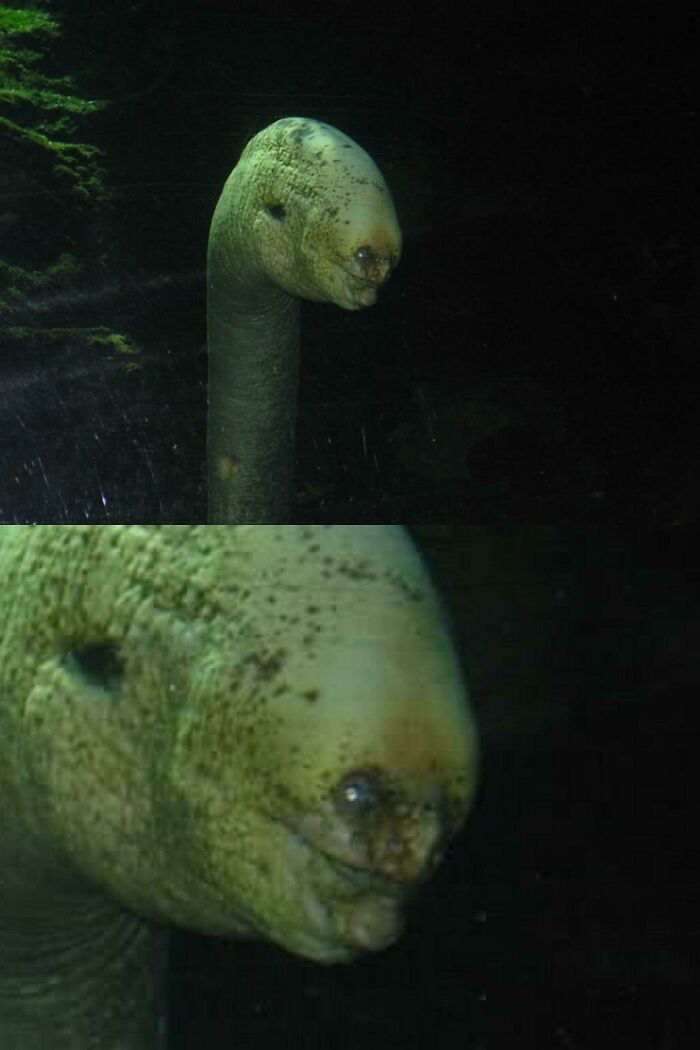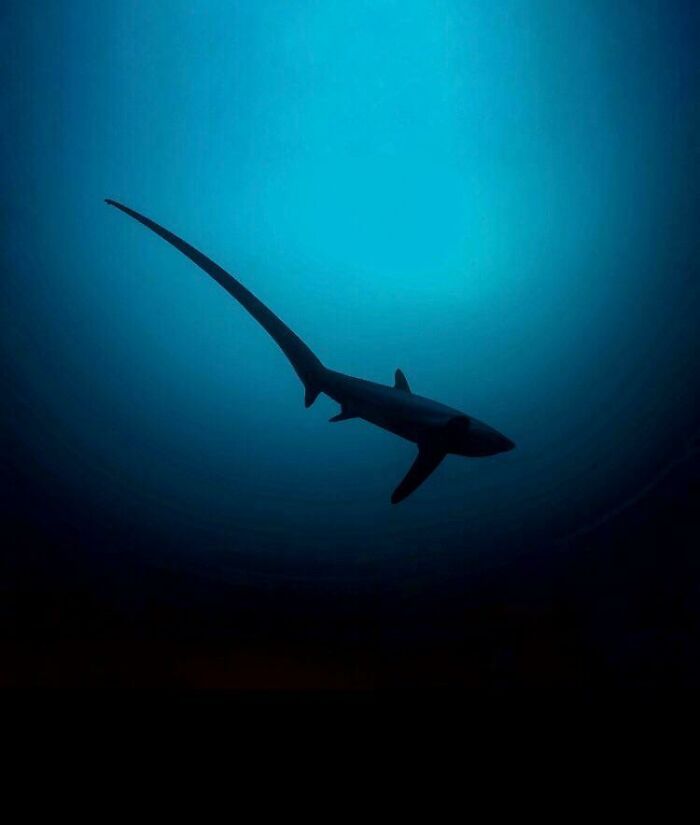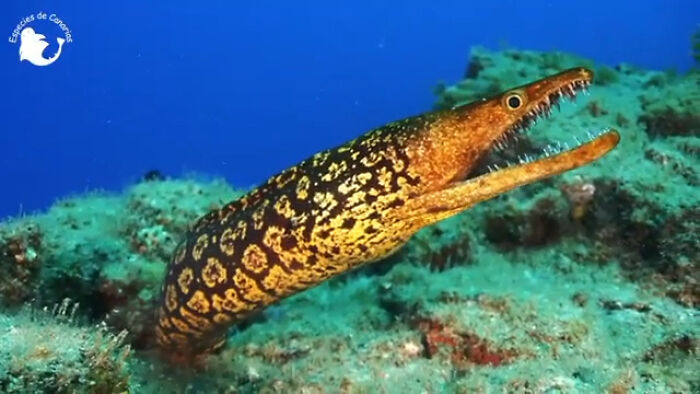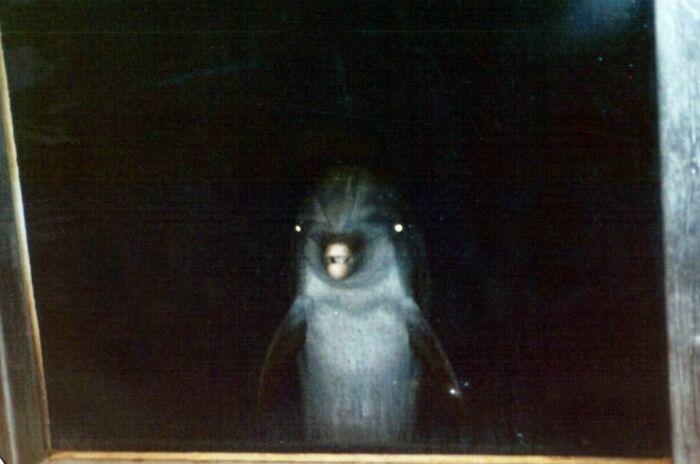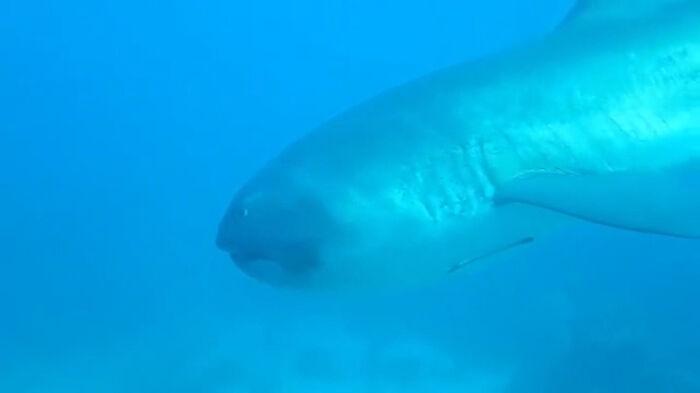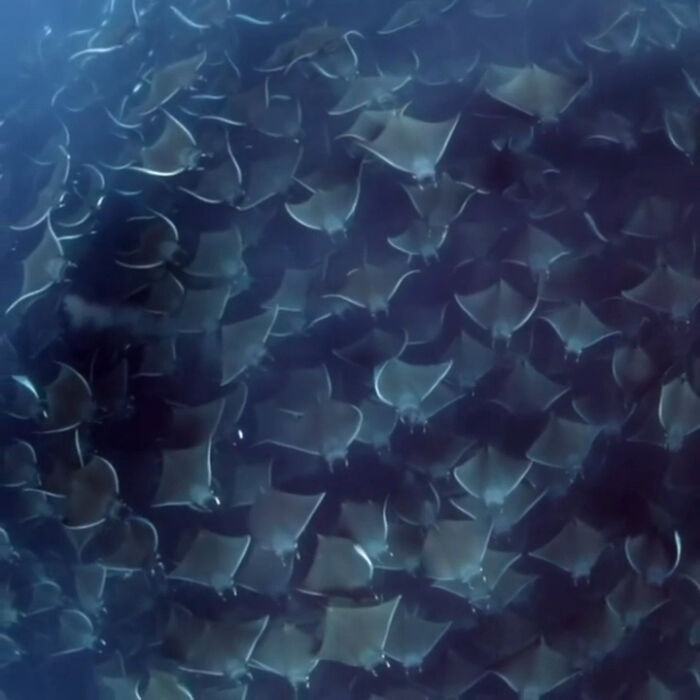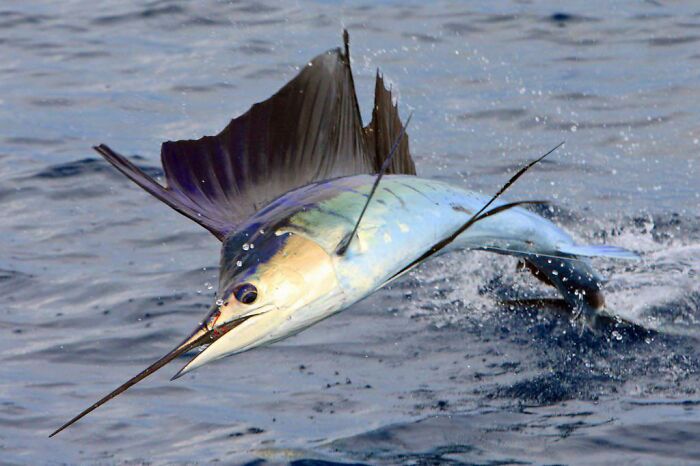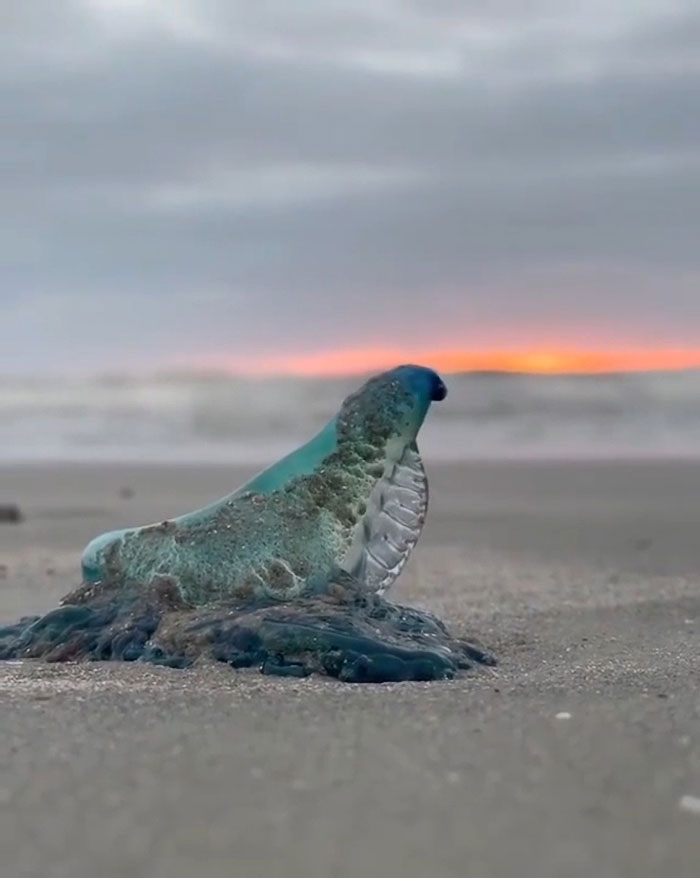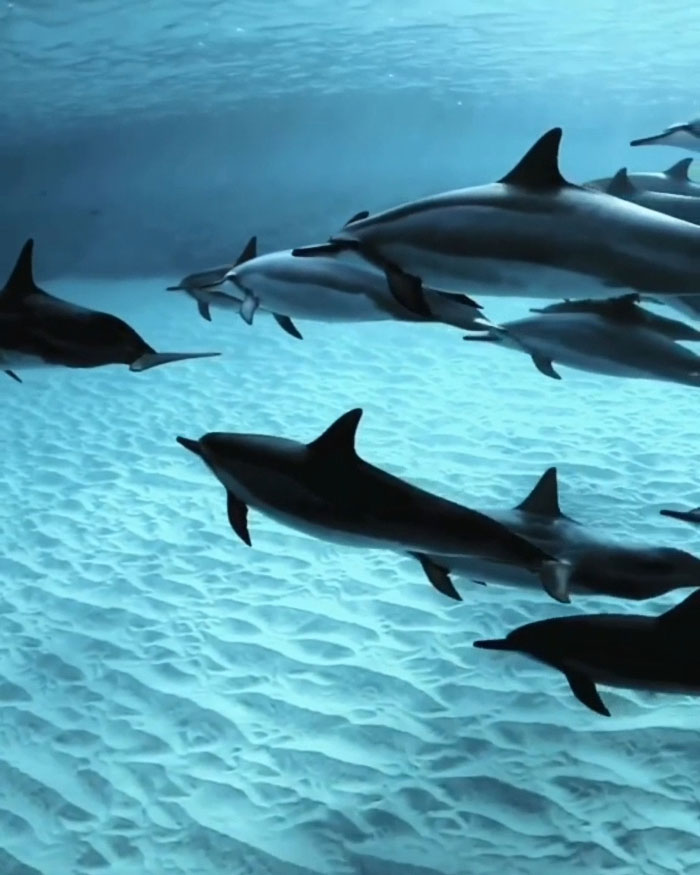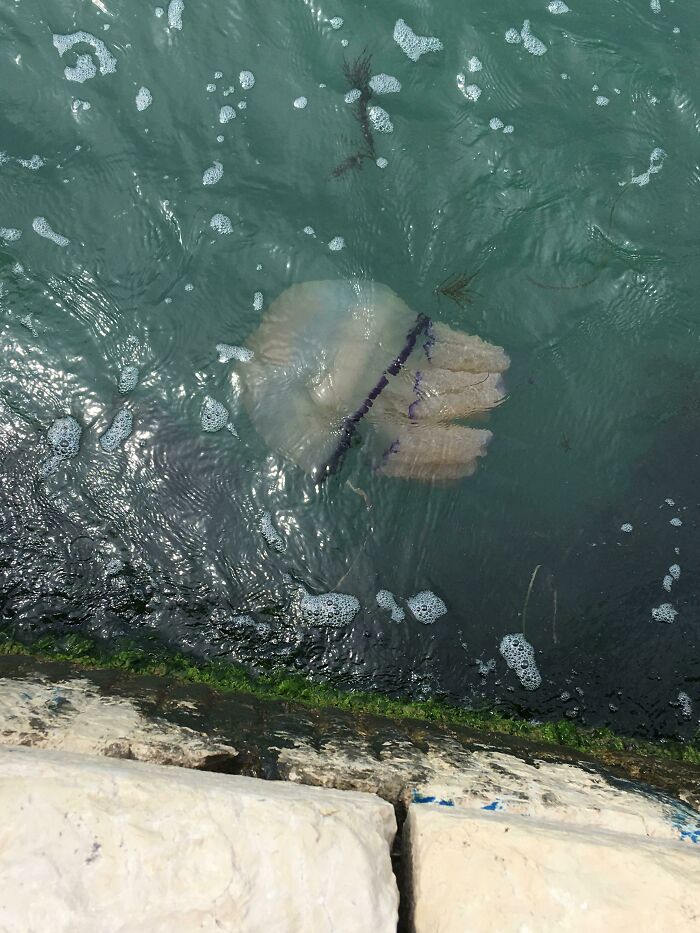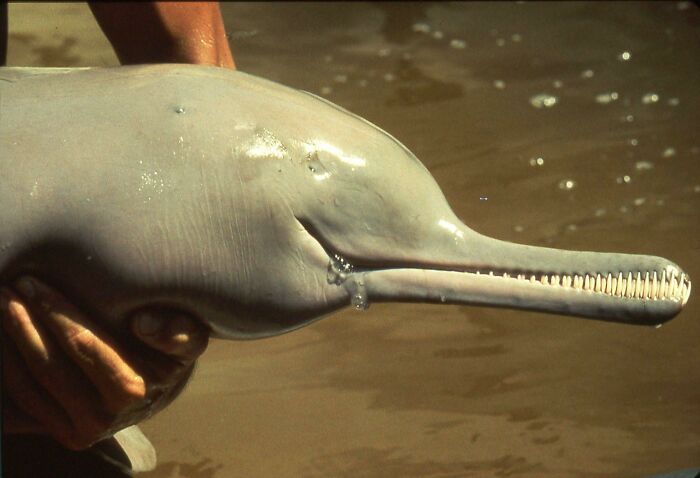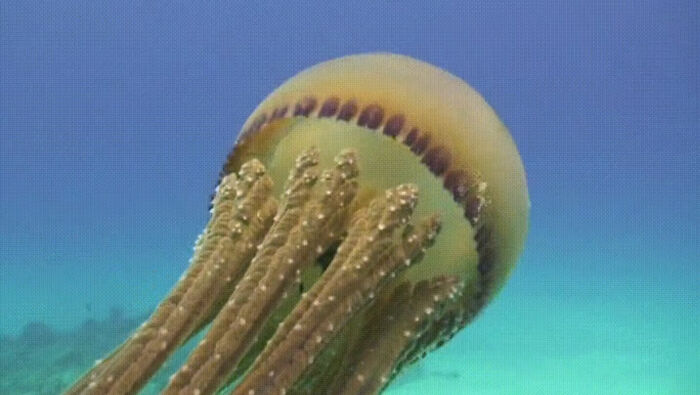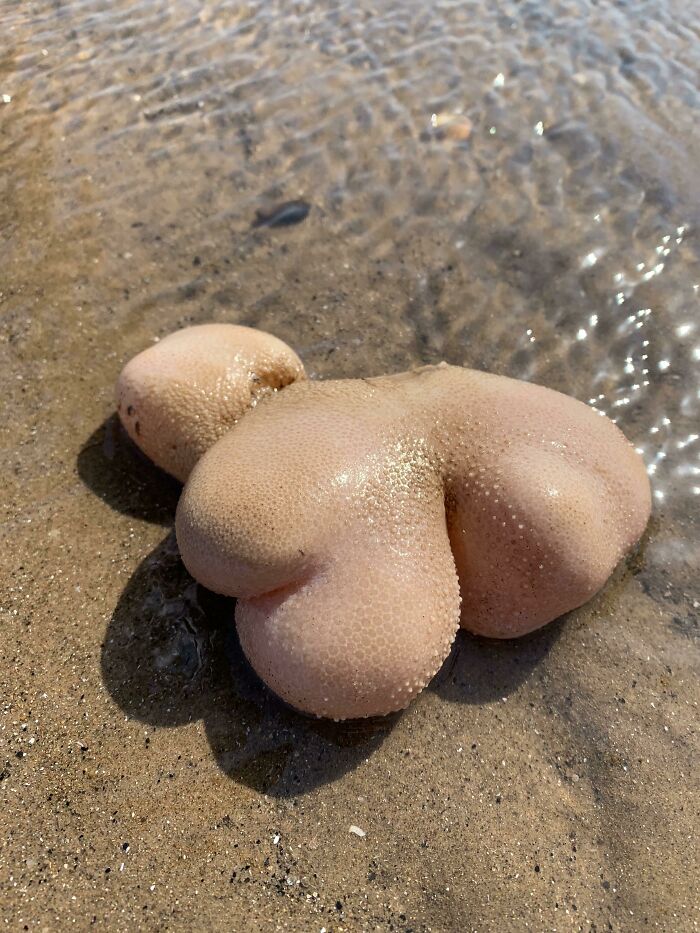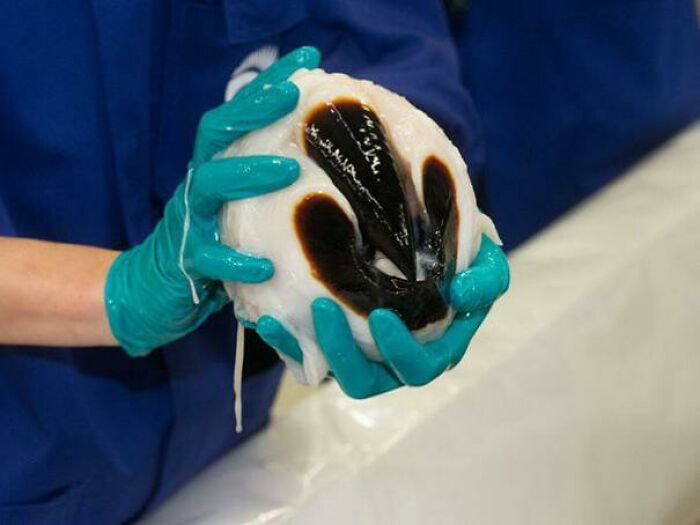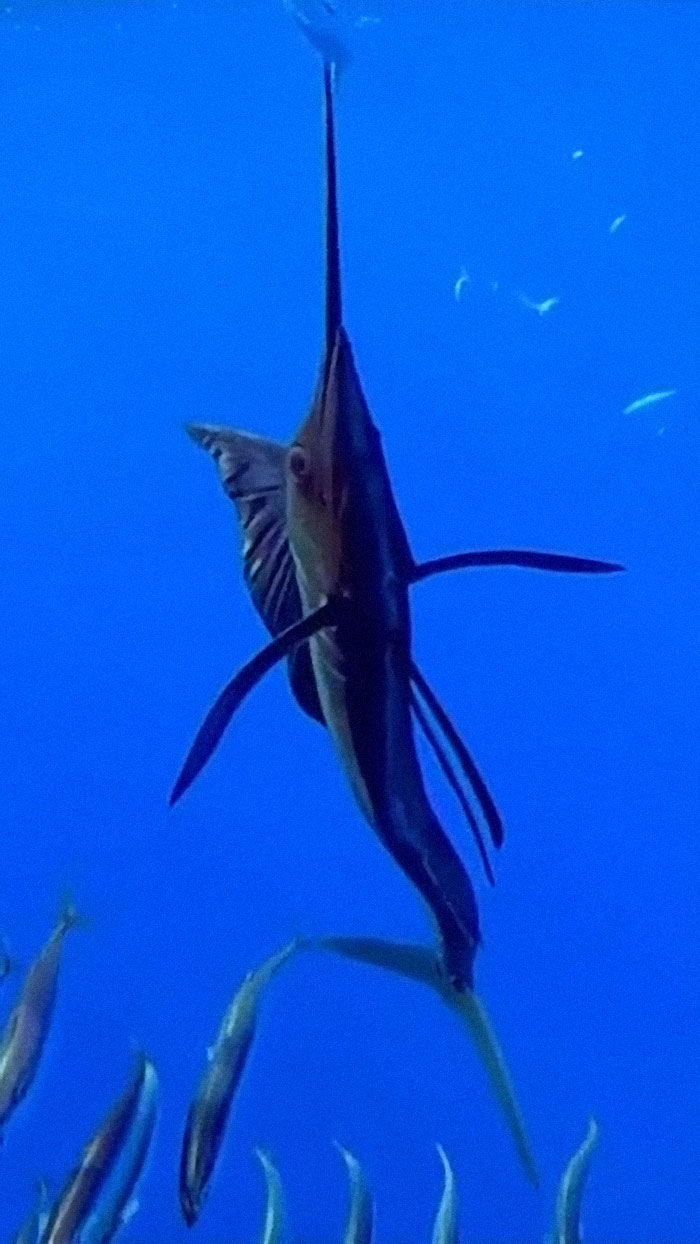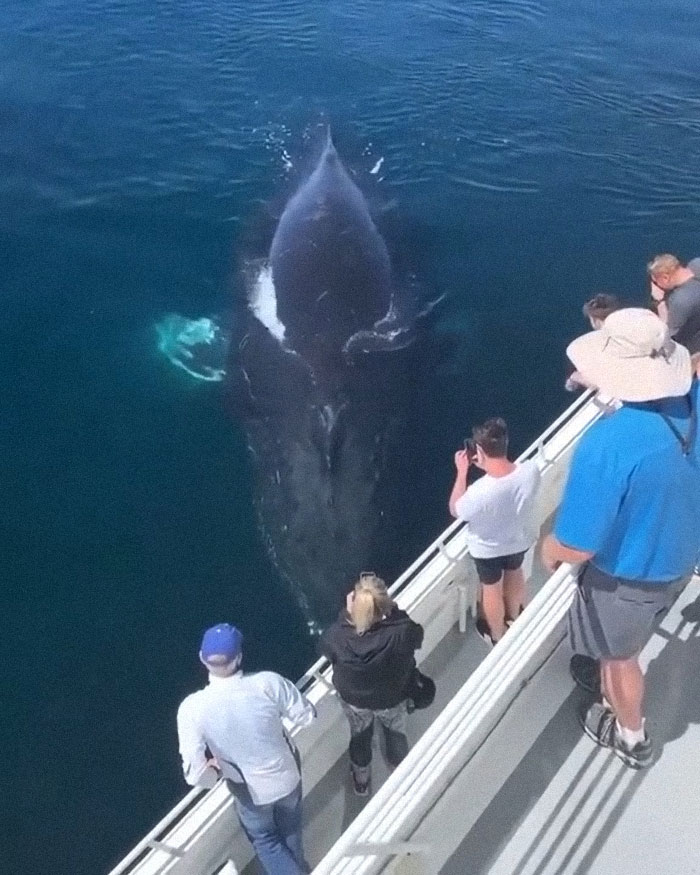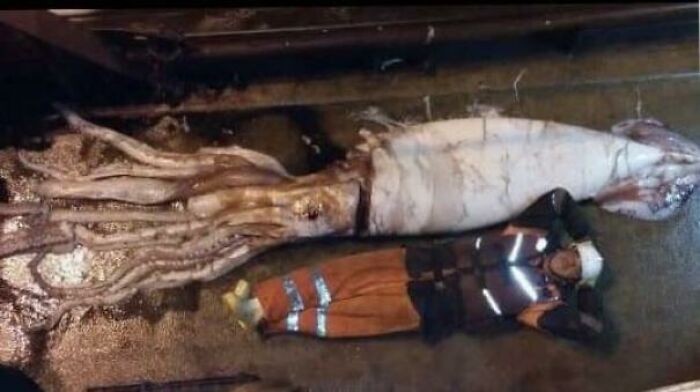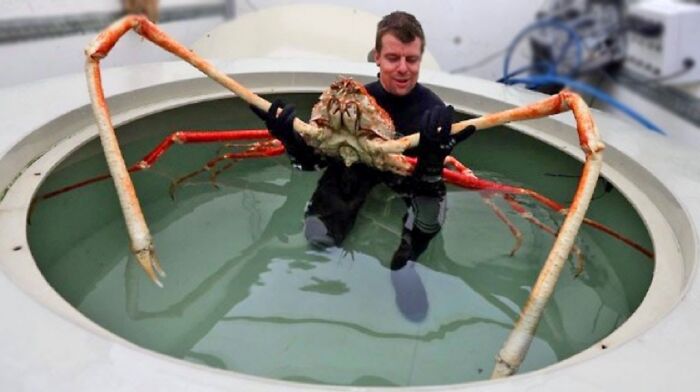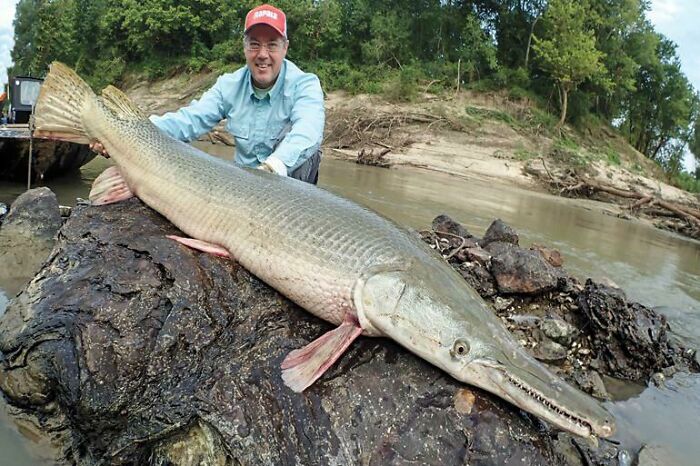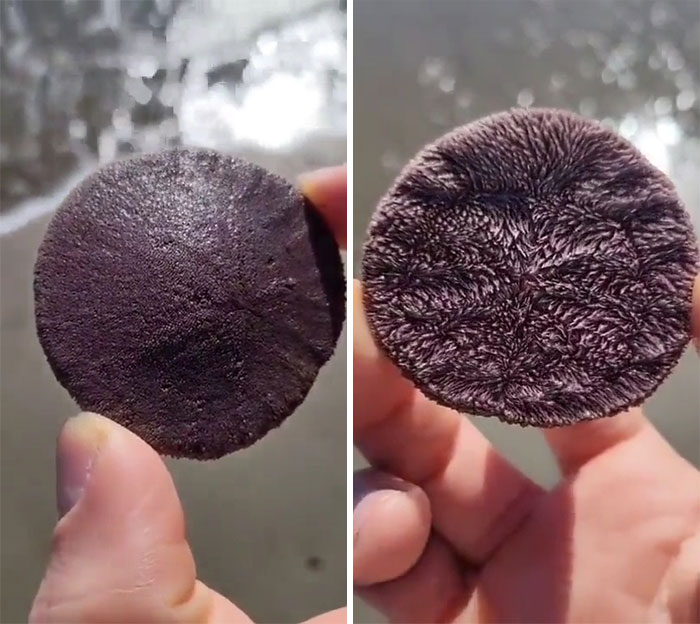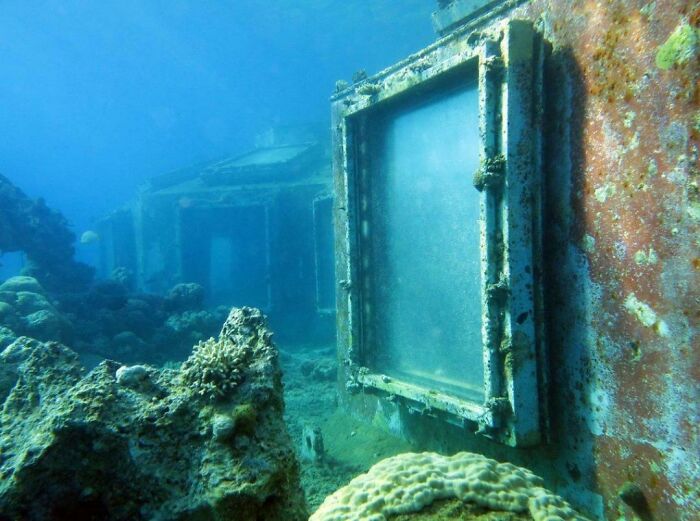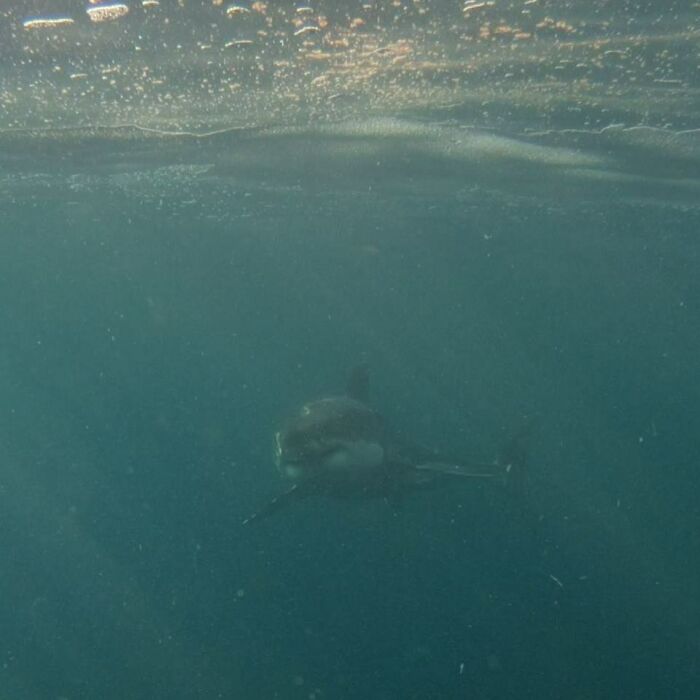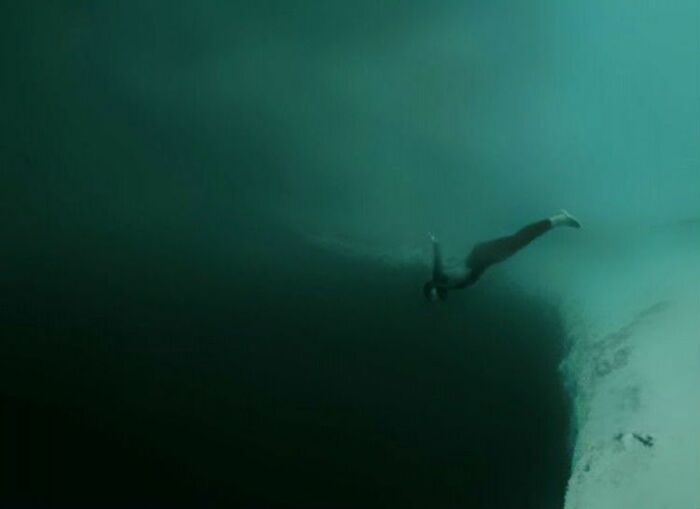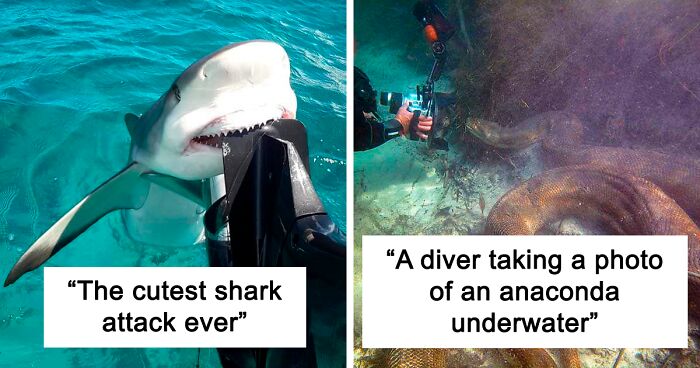
140submissions
Finished
“71% Of The Earth’s Surface Is Covered By Water”, And These 50 Pics Of Deep Water Are Exactly The Reason Why That’s Not Good
The ocean is shrouded in mystery. It covers about 71% of the Earth’s surface, yet we know very little about it when you consider how vast it is. In fact, it is estimated that at least 80% of the ocean has never been mapped, explored or seen by any humans. So what is lurking out there? We’ll never know everything, but one online group is dedicated to featuring all of the creepy, beautiful and fascinating creatures that are living deep down in the sea.
Let me introduce you to The Depths Below subreddit. With the tagline, “Because we all know there’s things lurking underwater”, this group shares rarely seen footage and photos of sea creatures that you might not even know exist. We’ve gathered some of their most captivating posts down below, so if you already have a fear of the ocean, tread lightly. But if you’re intrigued by the mysteries and depth of these great bodies of water, we think you will have a blast exploring this list. Be sure to upvote all of the creatures that you find most interesting, and then let us know in the comments if you have ever seen any peculiar animals while at the beach. Keep reading to also find interviews with Dr. Scarlett Smash and Dr. Craken MacCraic of the Marine Conservation Happy Hour Podcast, and Bart Vanhoorne of the World Register of Marine Species. Then if you’re looking for another Bored Panda piece highlighting how vast and mystifying the ocean is, check out this story next.
This post may include affiliate links.
Leaf Sheep, The Adorable, Photosynthesizing Sea Slugs
There’s nothing better than a trip to the beach. Getting to lay out in the sand soaking up the warmth of the sun and then jumping into the cool waves when you start to overheat is the best. The fresh scent of sea air and the sand between your toes make the experience feel so special, and if you’re lucky, you might even spot a sea dollar, a crab or a dolphin off in the distance. Occasionally, a jellyfish might catch you, but it’s rare that a beach trip includes very many encounters with other wildlife. If you go just a bit further into the ocean though, or a lot further, there’s no telling what you would find.
Much of what we know about the ocean is actually just estimations. It is so large and so vast that it’s difficult to even comprehend. By using satellite measurements, scientists have estimated that the average depth of ocean basins is 3,682 meters or 12,080 feet. That is almost as tall as Mount Fuji, so just imagine the famous volcano flipped upside down. That’s the bottom of the ocean, on average.
Great Googly Moogly
According to the Intergovernmental Oceanographic Commission, satellite data has also been used to create high-resolution seafloor mapping, but only 10% of the ocean’s floor has been mapped in high resolution. So for the most part, it is still a mystery to us. In fact, scientists know more about the surface of the Moon and about Mars than we do about the depths of the ocean. For all we know, there could be aliens hiding down there!
The Pacific Ocean in particular is extremely mysterious, as it is the largest and deepest ocean basin in the world. It covers almost a third of the planet and almost half of the water surface. The Pacific Ocean’s average depth is a staggering 4,280 meters (or 14,040 feet), which is about the height of Mount Whitney in California. The deepest known spot on the planet is actually part of the Pacific Ocean as well, Challenger Deep in the Mariana Trench. East of the Philippines, this trench is more than 1,500 miles long and 43 miles wide, and it’s deepest spot reaches 11,034 m (or 36,201 feet) below sea level. That’s over 2 kilometers deeper than the height of Mount Everest.
Meet "Inspector Clouseau", The World’s Only Pink Manta Ray
This list features some of the most fascinating creatures living in the ocean, so it's only natural to touch on the topic of marine biology. To get some insight from the experts, we reached out to Dr. Scarlett Smash and Dr. Craken MacCraic from the Marine Conservation Happy Hour podcast to hear how they got into marine biology and what they love most about it. "It all started from watching the movie The Little Mermaid," Dr. Smash told Bored Panda. "I fell in love with the underwater lifestyle that she had. But I just could not understand why she would leave the sea for a man. So, to relieve my frustration with the ending of the movie, I decided to become a marine biologist, so I could return to the sea for her." Excellent reasoning for choosing this career path, I have to admit that Ariel is my favorite Disney princess as well.
"Ever since an early age I've been fascinated by the ocean and marine species," Dr. MacCraic says. "I used to watch Jacques Cousteau documentaries and imagine I was going scuba diving and living and working under the ocean when I was 5. Initially my interest in marine biology was that there was so little known about this fascinating world, but now I'm more focused on helping to conserve the oceans and encourage people to act to save them before its too late."
It's Not All Bad Down There
A Mother Humpback Whale And Her Calf, In A Position Known As “Echelon”
I feel comforted just by looking at this picture, so I know the little calf must feel well protected. ❤
Meet This 90 Year Old Turtle!
Does he have purple eyes or...? Anyway, congrats on making it to 90, old man! ❤
We also asked Dr. Smash and Dr. MacCraic for some of the most interesting facts they know about the ocean and sea creatures. "Lobsters pee out of their eyes as a way of communication," Dr. Smash shared. "Lobsters release pee from a nozzle located under their eyes during fights and mating."
Dr. MacCraic told us, "Well, the general public thinks that dolphins love people and want to swim with us, but actually a lot of them are sex-crazed bullies. But they can be incredibly smart - their linguistic abilities are really astounding - they understand syntax, they can understand abstract characters as symbols for objects and actions (e.g., they can almost "read"), they use tools, they have accents, they have culture. They even have 'names'."
"Also the cephalopods are fascinating - especially cuttlefish," he continued. "The way they use color to communicate and how they have been shown to be capable of really complicated understanding of how others perceive the environment - it suggests that they have some cognitive abilities at least as high has human toddlers. Generally, humans underestimate how smart many species are, and how we are not so special."
The ‘Strawberry Squid’ Lives In A Region Of The Ocean Known As The Mesopelagic Or "Twilight" Zone, 200 To 1000 Meters Below The Surface [photo By Paul Caiger]
Lastly, we asked Dr. Smash and Dr. MacCraic what everyone should know about marine life and why we should all care about it. "It is absolutely remarkable how deep the ocean is and how little we know about what is lurking in the depth of the ocean," Dr. Smash replied. "The ocean is like its own planet, and if people are so interested in exploring space for new species (extraterrestrial) then they should be as interested in the deep sea."
"Dolphins are shockingly intelligent - they have a cognitive level at least of that of a young human," Dr. MacCraic said. "The oceans are essential to use for everything from the the air we breath (most oxygen is produced by phytoplankton) to the food we eat (without the oceans there would be no rain, no agriculture, and the land would be a blistering hellscape)."
Stingray Migration
"Really it's only half a dozen million years ago that species like dolphins would have been the most intelligent beings on the planet, while our ancestors were still swinging in trees," Dr. MacCraic explained. "Yet, we've killed these amazing species in their thousands so we can get cheap tuna fish sandwiches. And don't get me started on killing octopuses for calamari..."
"How we treat marine species should be a measure and indicator of our own humanity and development," he says. "For example, if we keep capturing dolphins for our own pleasure to have them 'entertain' us in aquariums or allow them to be killed in fisheries, we are little more than barbarians."
If you're interested in learning more about marine biology and how we can help conserve the oceans, be sure to check out the Marine Conservation Happy Hour podcast right here.
The Cutest Shark Attack Ever
A Pair Of Eagle Rays Gliding Through The Dark Depths
The ocean is mysterious enough in and of itself, but the countless creatures hiding inside of it are even more perplexing. According to the World Register of Marine Species, or WoRMS, there are currently 240,874 accepted marine species. However, their database only has images for 38,055 of these creatures. Their website explains that, “The aim of a World Register of Marine Species is to provide an authoritative and comprehensive list of names of marine organisms, including information on synonymy.” The gallery on WoRMS includes many different categories of creatures, including Fungi, Aves (birds), Scyphozoa (jellyfish), Plantae, Crustacea, Nematoda, Reptilia and many more. The database can be overwhelming due to the sheer number of images and species it catalogs, but it is amazing to know that this is only a small portion of what’s actually out there lurking in the depths.
Sea Slugs Be Lookin Like They're Straight Out Of Ark Or Subnautica
Sitting On The Edge Of The Abyss
We reached out to Bart Vanhoorne, a member of the WoRMS Data Management Team, to hear how much we really know about marine life. Bart told us, "Less than [we know about] the moon, so we don’t know a lot." But he noted that they are learning more each and every day. We also asked him how a new marine species is found and classified. "They are found by taking samples from the sea and comparing the species with existing descriptions. If they cannot be compared to anything known, it’s considered a new species and described in a scientific paper," Bart explained. "New DNA techniques are also being used for this. They are classified in a taxonomy/hierarchy."
Lastly, we asked Bart what we should all know about marine life and why we should care about it. He reiterated that even scientists know very little. "Only 10-20% of the sea in general is known to science." But when it comes to why we should all be interested, he stated, "It should be researched before it’s lost."
If you'd like to learn more about marine life from WoRMs, you can check out their website right here.
Okey, I Have To Admit This Is Almost Cute... Almost
Cute if it weren't about to kill me. That little grin ain't fooling anyone!!
A Diver Taking A Photo Of An Anaconda Underwater
Hatchet Fish Faces Looking Like The Souls Of The Damned
The Depths Below subreddit is famous for sharing videos and photos of creatures many of us have never seen before or even heard of, and it’s clearly grabbed the attention of many people, as the page has amassed over 800k members over the past 9 years. The community’s description states, “71% of the earth's surface is covered by water according to NOAA. That only gives us 29% where we're safe. If an animal the size of a blue whale can disappear for months at a time, what else is down there? We're here to show you.” And they certainly do. Scrolling through the page for a few minutes, you’ll find deep sea footage of animals that look like aliens and fish that look like they might bite off your head if they had the chance. But along with all of these fascinating images, we wanted to learn a bit about the creatures as well. So we consulted Marine Madness’ list of mind blowing facts about our oceans and marine life.
A Whale Shark Swimming In Bioluminescent Algae Makes It Look Like It Is Drifting Through Space. Video By Mike Nulty
Saw these at the Georgia Aquarium. The pics don't do them justice. They're far more spectacular in person! ❤️🦈
The Size Difference Between An Adult Sunfish And A Sunfish Fry
He's Right Behind Me, Isn't He?
Did you know that Greenland sharks can live for up to 500 years? The National Ocean Service reports that these creatures have the longest lifespans of any vertebrates. Greenland sharks have no fin spines and no hard tissues in their bodies, but they grow at an extremely slow rate, of less than 1 centimeter per year, and can reach over 6 meters in size. Scientists theorize that this long lifespan might be partially due to their extremely slow metabolisms, which they developed to be able to withstand extremely cold waters. These sharks do not reach sexual maturity until they are over 100 years old, so it is vital that the species is protected in their youth so they can continue to maintain their population.
Saw Fish From Below
A Terrifying Comparison Of The Tentacles Of The Giant Squid (Left) And Colossal Squid (Right). The Giant Squid Is Meant For Painful Latching While The Colossal Squid Is Meant For Ripping Apart
Didn't think you could make the scariest ocean animal even scarier... I've been proven wrong again.
One Of The Few Albino Whales Left On Earth
We all know that dolphins are very vocal and communicate with one another with distinct whistles and clicks, but did you know that dolphins also have dialects and accents just like humans? Researchers from the University of Sassari in Italy studied 188 hours of sounds of various dolphins living among six different communities in the Mediterranean Sea, and found that the length of whistles and variations in pitch differed depending on the location each dolphin was from. The researchers were able to identify 168 distinct sounds that were influenced by each dolphin’s home environment and how many dolphins lived in that area. I wonder if American dolphins like to attempt the accents of British dolphins too...
Giant Sturgeon In The Fraser River, Canada
A Scallop That Looks Absolutely Monstrous. The Blue Parts Are Its Eyes, And It Can Have Over 200 Of Them
No-one knows what it's like to be the bad clam, to be the sad clam, behind blue eyes.
Sleeping Sperm Whales
If you have ever had a baby, that 9 month gestational period probably felt grueling towards the end. But can you imagine being pregnant for 3.5 years at a time? Well, frilled sharks don’t have to imagine it. The mothers of this species can carry their babies for an impressive 40 month period due to their slow metabolic process. “Like most sharks, the frilled shark is ovoviviparous, meaning embryos of this species have no placental connection with their mother. Instead, they emerge from their eggs, staying inside their mother and surviving on yolk until they’re born alive,” Flip Science explains. 3.5 years is a long time, but each mother can have a litter of 2-15 pups during that time. So maybe it’s worth it.
Best High Five Ever
Then the shark swims away and smacks him in the head with the tail fin
Picture Of A Leopard Seal Taken In The Dark Depths. Its Only Natural Predator Is The Killer Whale
Amazon River Dolphins
Comprehending how vast the ocean is feels similar to comprehending space. We are so tiny, but it is amazing to think about how complex life is on our planet. We hope you’re enjoying this list of fascinating sea creatures and that you’re learning something new. Keep upvoting the posts that blow your mind, and then let us know in the comments if you have any wild sea stories to share. Then if you’d like to read another piece about how vast the oceans are, check out this article next.
We Are Here To Appreciate The Awesome Majesty And Incredibly Cool Aspects Of Nature
A Photo Of A Magnapinna Squid Captured By A Deep Sea Drilling Company. They Live So Deep In The Ocean That Very Little Is Know About This Creature
The Mantis Shrimp, Thought To Have The Most Complex Visual System Ever Discovered In The Animal Kingdom. Humans Have 3 Types Of Photoreceptor Cells In Their Eyes, While Mantis Shrimp Have Between 12 And 16. They Can See Wavelengths Of Light And Color That Humans Cannot
This Is What A Blob Fish Actually Looks Like Underwater In Their Natural Habitat
yep. they lose all of their shape and have their internal organs crushed because of the intense pressure change, they typically die instantly when brought up to the surface.
The Portuguese Man O War
The Lizard Fish. Found 8000 Ft Below
This Whale My Wife Saw While Supervising A Trydiver. First Dive And You See A Whale. Wtf
Hammerhead Sharks Nailing This Group Photo
Except Francis, doing a funny face... Thank you Francis for ruining the christmas card !
A Killer Whale Jumps 15ft High To Catch Its Prey Which Is A Dolphin
The Ogre Fish Has Only Been Spotted A Few Times In Decades Of Ocean Research
Sharks Kill Less Than 6 To 8 People, While Humans Kill About 100 Million Sharks Every Year
LISTEN UP PEOPLE, YOURE MORE LIKELY TO BEEN KILLED BY A COW THAN A SHARK!
The Eye Of A Gray Whale
Mother, Calf, And Escort Sleeping Peacefully
I wanna sleep like a whale...however, whenever, and wherever it feels like nap time.
For Your Viewing Pleasure: The Viper Dogfish
The Antarctic Amphipod Is One Of The Most Alien Creatures To Inhabit The Depths Below
The Chirodectes (An Incredibly Rare Genus Of Box Jellyfish) Seen Just Twice, This Is The Only Known Footage To Exist. 1st Post More Details
For those who want to see the video (it's amazing!): https://www.reddit.com/r/TheDepthsBelow/comments/sm9djz/the_chirodectes_an_incredibly_rare_genus_of_box/
Deep Blue, One Of The Largest Great White Sharks, Roams The Open Ocean
Dear shark: You're beautiful! Dear diver: What the f**k are you doing. you crazy.
Giant Squid Makes An Appearance In Tokyo Bay
Poor, poor thing. I think it came up to the surface because it was dying.. :(
Below A Crocodile
A Russian Fisherman Caught A Deep Sea Fish Which Straight Up Resembles A Nightmare
A Cuttlefish Has Three Hearts, Blue-Green Blood, And Horizontal Vision Which Allows Them To See Behind Themselves
Pov You're A Fish In The 1700's
Rare Footage Of The Giant Squid, Filmed A Few Miles From The Appomattox Deepwater Oil Rig
When A Crab Gets Bitten By A Radioactive Spider...
I was gonna say spider crab imagin finding that while swimming
Gulper, Aka Pelican Eel
Phantom Jellyfish Very Cool But I'd Hate To Bump Into It. Unlikely As It Lives In Deep Dark Water It.
Anglerfish
I Present To You: The 18 Metre Sea Condom
It’s actually a bunch of tiny creatures! “Pyrosomes, genus Pyrosoma, are free-floating colonial tunicates that usually live in the upper layers of the open ocean in warm seas, although some may be found at greater depths. Pyrosomes are cylindrical or cone-shaped colonies up to 18 m long, made up of hundreds to thousands of individuals, known as zooids.“
Not Everything Is Terrifying! The Sea Angel Slug Swims In The Deep Using Flaps As Sort Of Wings!
Pop: It's Monday Morning In The Office And There's An Inch Of Coffee Left
The Adorable Dumbo Octopus
This Red Jellyfish Looks Like A Spaceship
I’ll Be Waiting For You Below
When The Kite Falls Out Of The Sky While Kitesurfing And You See This...
Omg horrible title, please fix it!! These beautiful creatures need respect!
i have had a fixation on marine biology since i was little, so i can say this post gives me much serotonin
I was talked out of going into marine biology by a career counselor at my high school. I lived in Florida and she said there were already too many who couldn't get jobs. Kinda regret listening.
Load More Replies...I'd like to think that humans will be satisfied with photos only, but I expect some to resort to capturing and marketing these creatures to extinction.
Omg horrible title, please fix it!! These beautiful creatures need respect!
i have had a fixation on marine biology since i was little, so i can say this post gives me much serotonin
I was talked out of going into marine biology by a career counselor at my high school. I lived in Florida and she said there were already too many who couldn't get jobs. Kinda regret listening.
Load More Replies...I'd like to think that humans will be satisfied with photos only, but I expect some to resort to capturing and marketing these creatures to extinction.

 Dark Mode
Dark Mode  No fees, cancel anytime
No fees, cancel anytime 




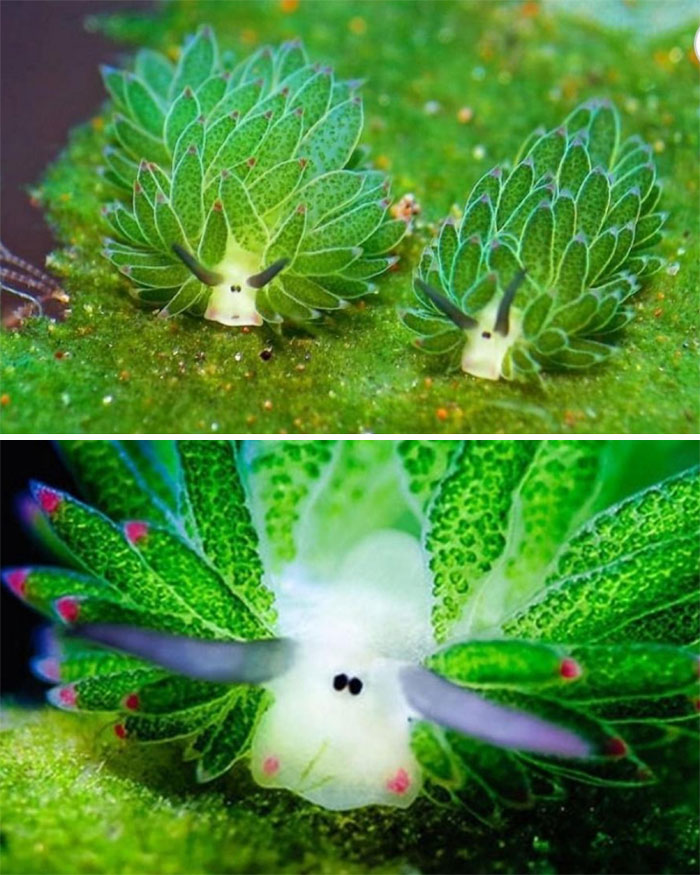

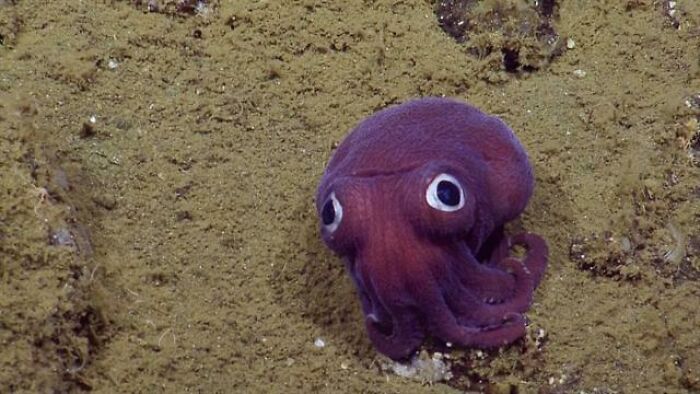
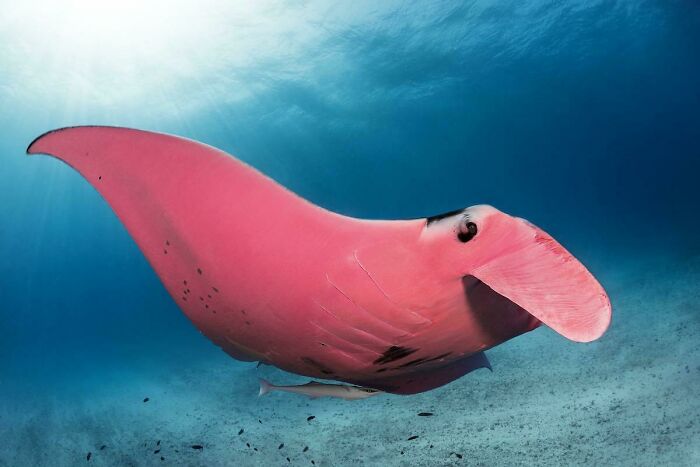
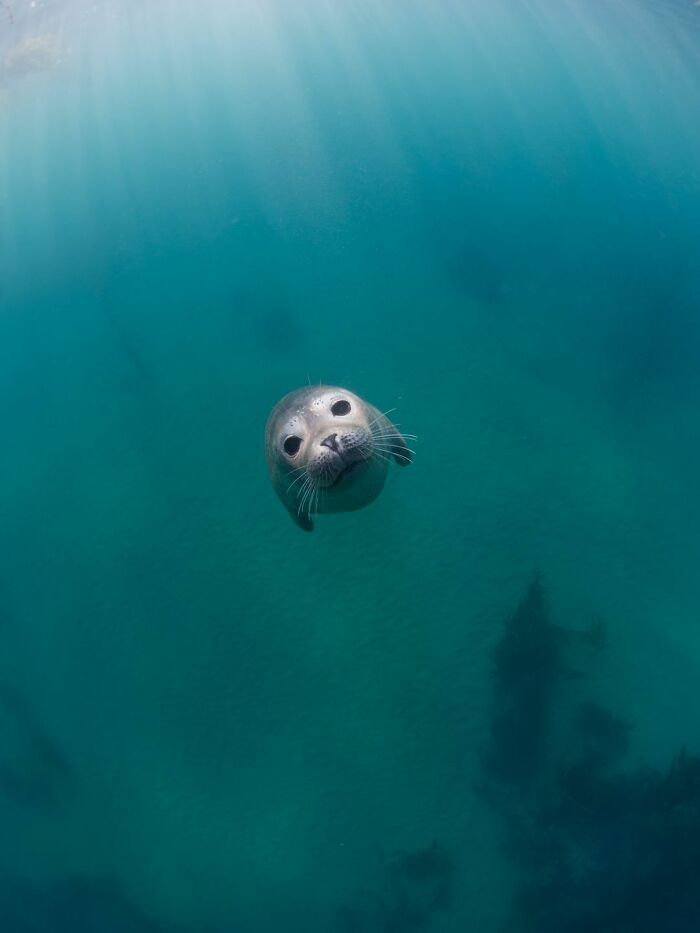
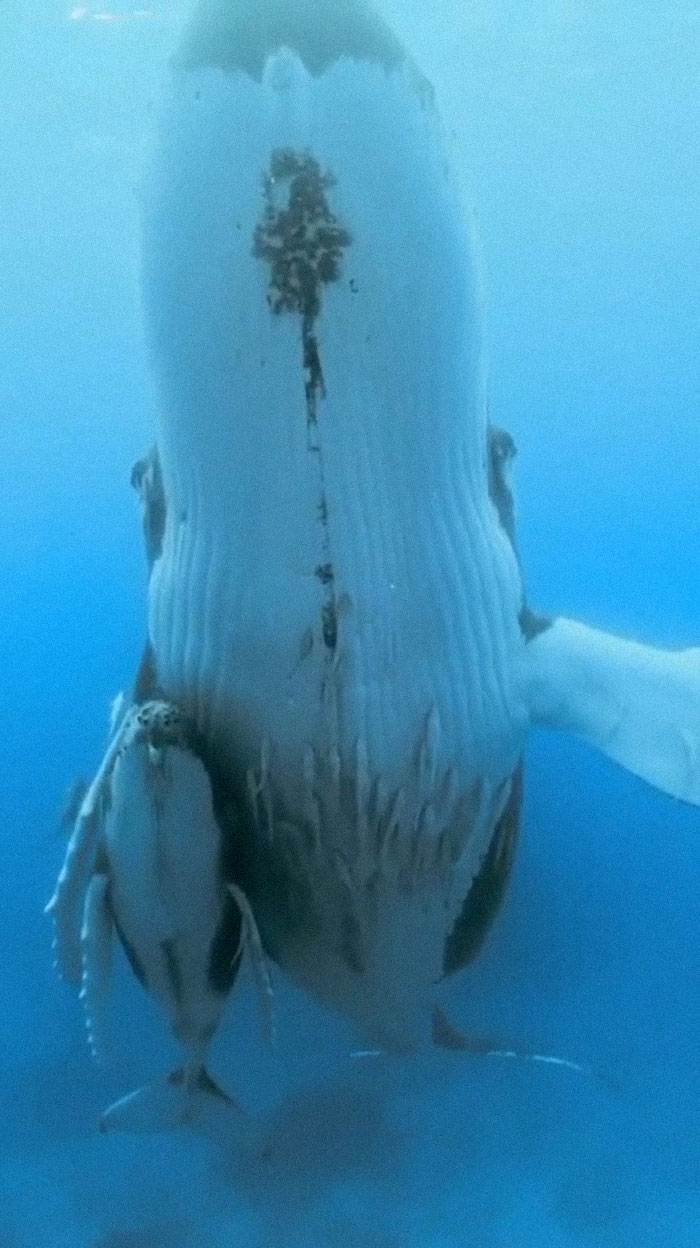
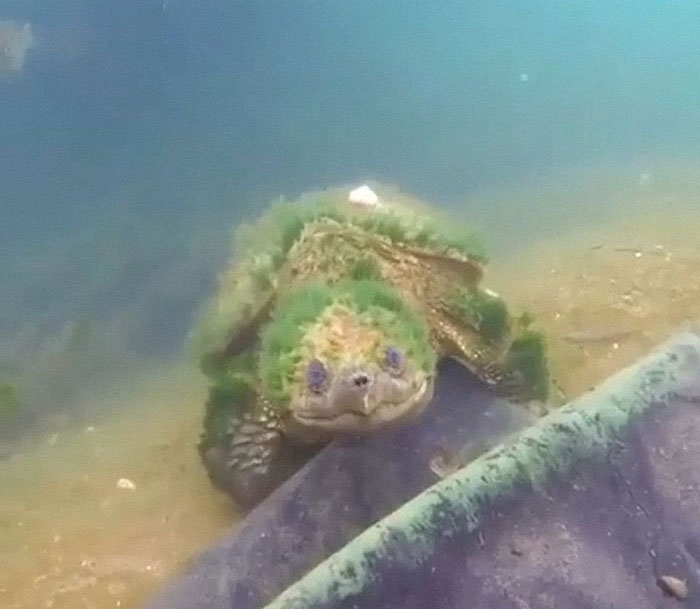
![The ‘Strawberry Squid’ Lives In A Region Of The Ocean Known As The Mesopelagic Or "Twilight" Zone, 200 To 1000 Meters Below The Surface [photo By Paul Caiger] The ‘Strawberry Squid’ Lives In A Region Of The Ocean Known As The Mesopelagic Or "Twilight" Zone, 200 To 1000 Meters Below The Surface [photo By Paul Caiger]](https://www.boredpanda.com/blog/wp-content/uploads/2022/07/scary-underwater-pics-the-depths-below-204-62d95c4e71306__700.jpg)
